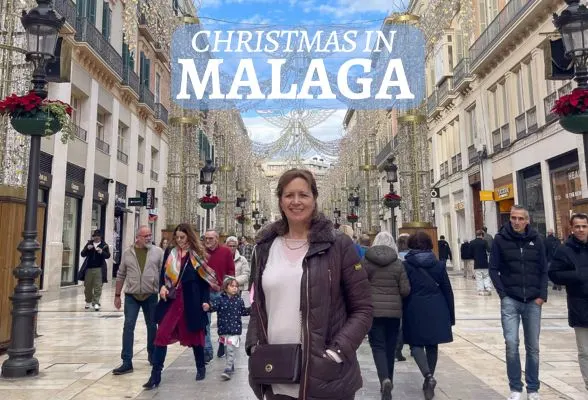The Spanish city of Malaga is often overlooked, as travellers rush through its airport on their way to the beaches of the Costa del Sol. Yet there are so many fun things to do in Malaga, with its sandy Malagueta beach, charming historic centre, Moorish palace and Roman theatre, world class museums and plenty of delicious food.
Whether you’re visiting for the day or staying a little longer, our Malaga travel guide covers the top things to see and other essentials for a fun visit. With so much packed into a small area, this city makes a perfect short break destination.
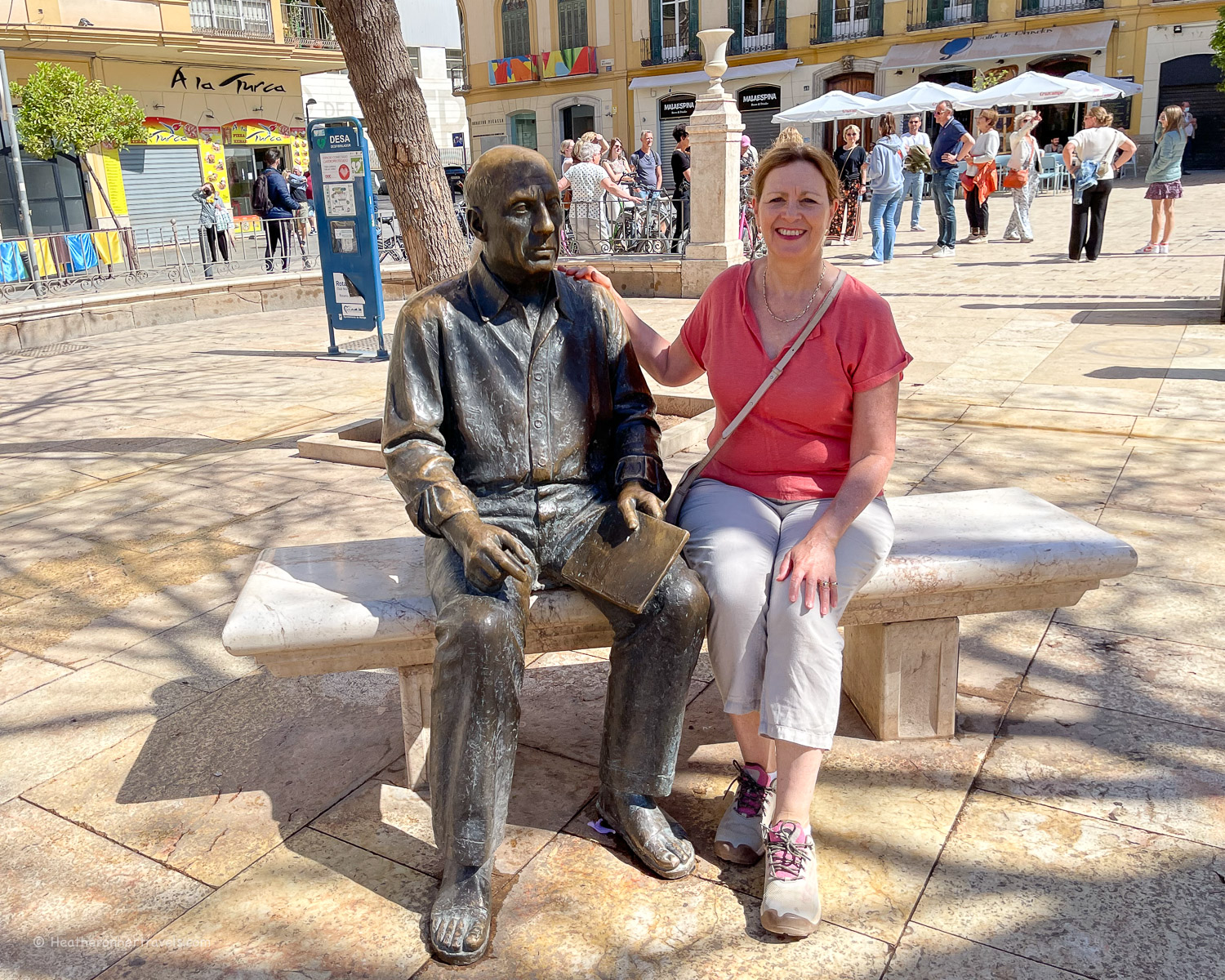
This article may contain affiliate links that provide commission on purchases you make at no extra cost to you. As an Amazon Associate I earn from qualifying purchases.
10 Top things to do in Malaga
If you are short of time in Malaga, here are our top things to see and do.
- Historic Centre – wander around the pedestrianised streets of the old centre, with its attractive and well restored buildings.
- Enjoy eating al fresco – the weather is mild enough to sit out year round in the many bars and restaurants, feasting on tapas and seafood or just sipping a coffee.
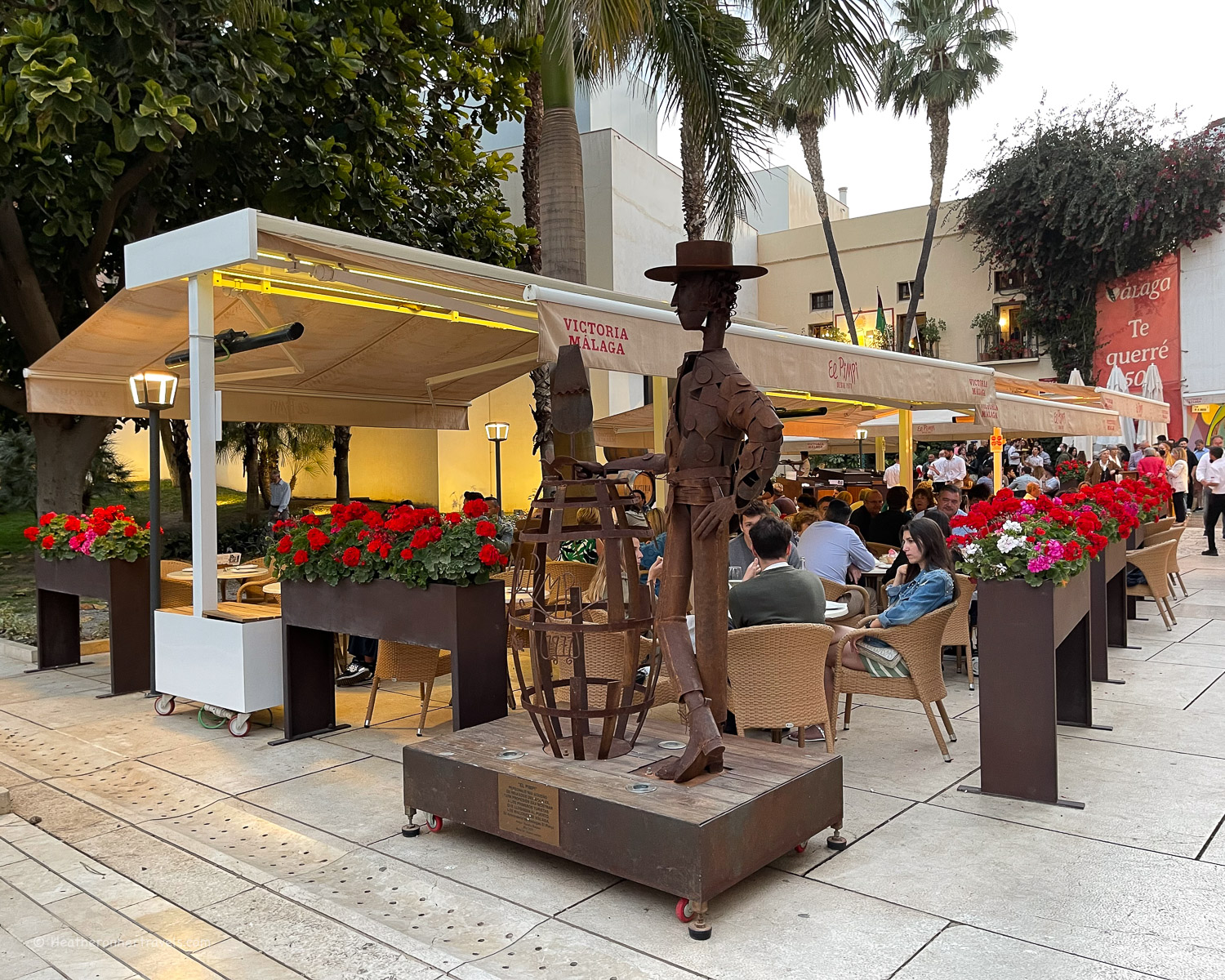
- Wander along the port – past the boulevard of Muelle Uno with its shops and restaurants, as far as the landmark Farola de Malaga lighthouse.
- Chill out on Malagueta Beach – swim, relax on the sand and eat seafood in one of the many Chiringuitos or beach bars.
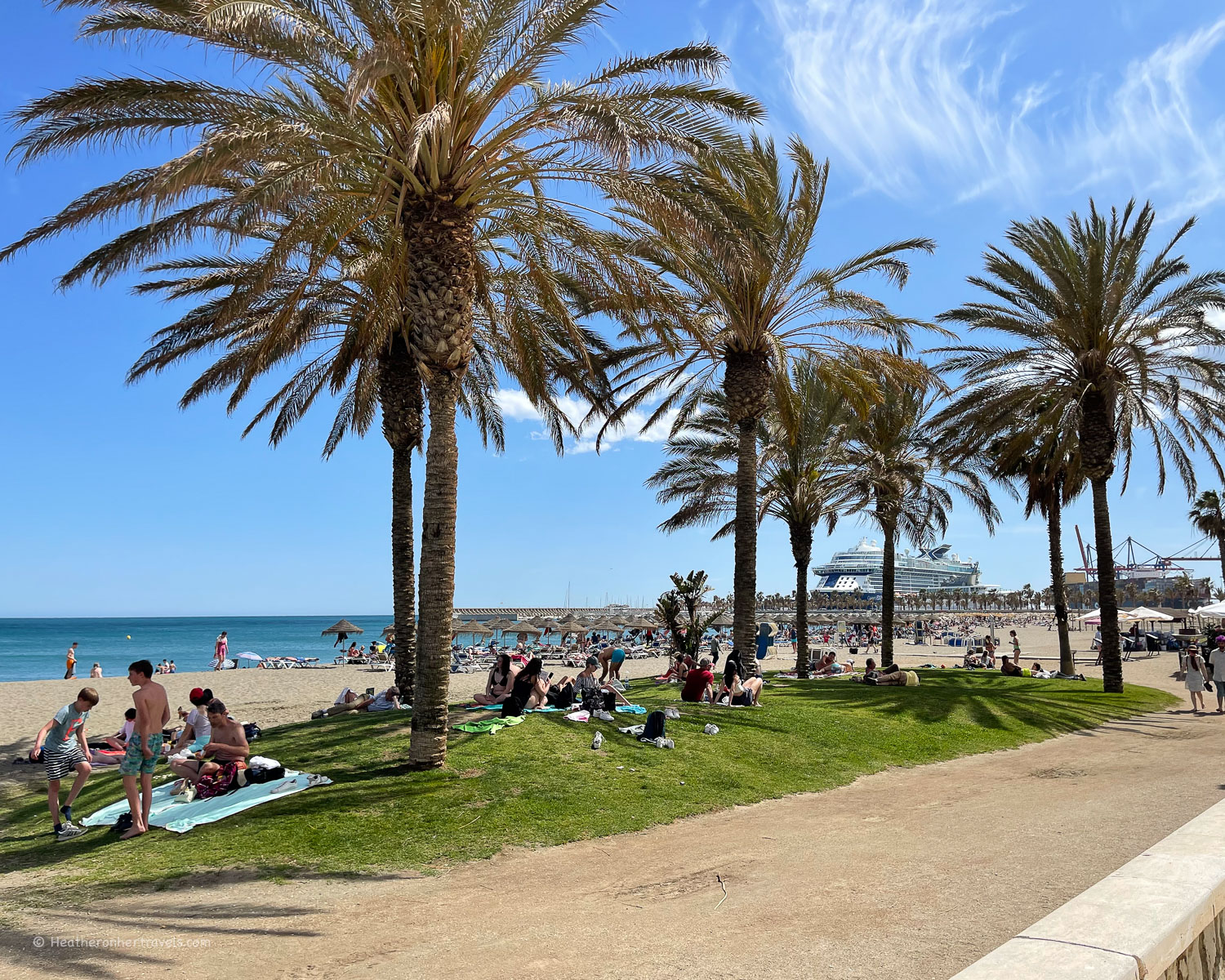
- Discover the Picasso connection – visit the Picasso Museum housing his artworks, take a selfie with his statue and visit the small museum of his birthplace.
- Explore the Alcazaba – a Moorish Palace set on the hill above the town, then climb up to the Gibralfaro fortress.
- Visit Malaga Cathedral in the heart of the old town – the roofop tour (if open) is a highlight.
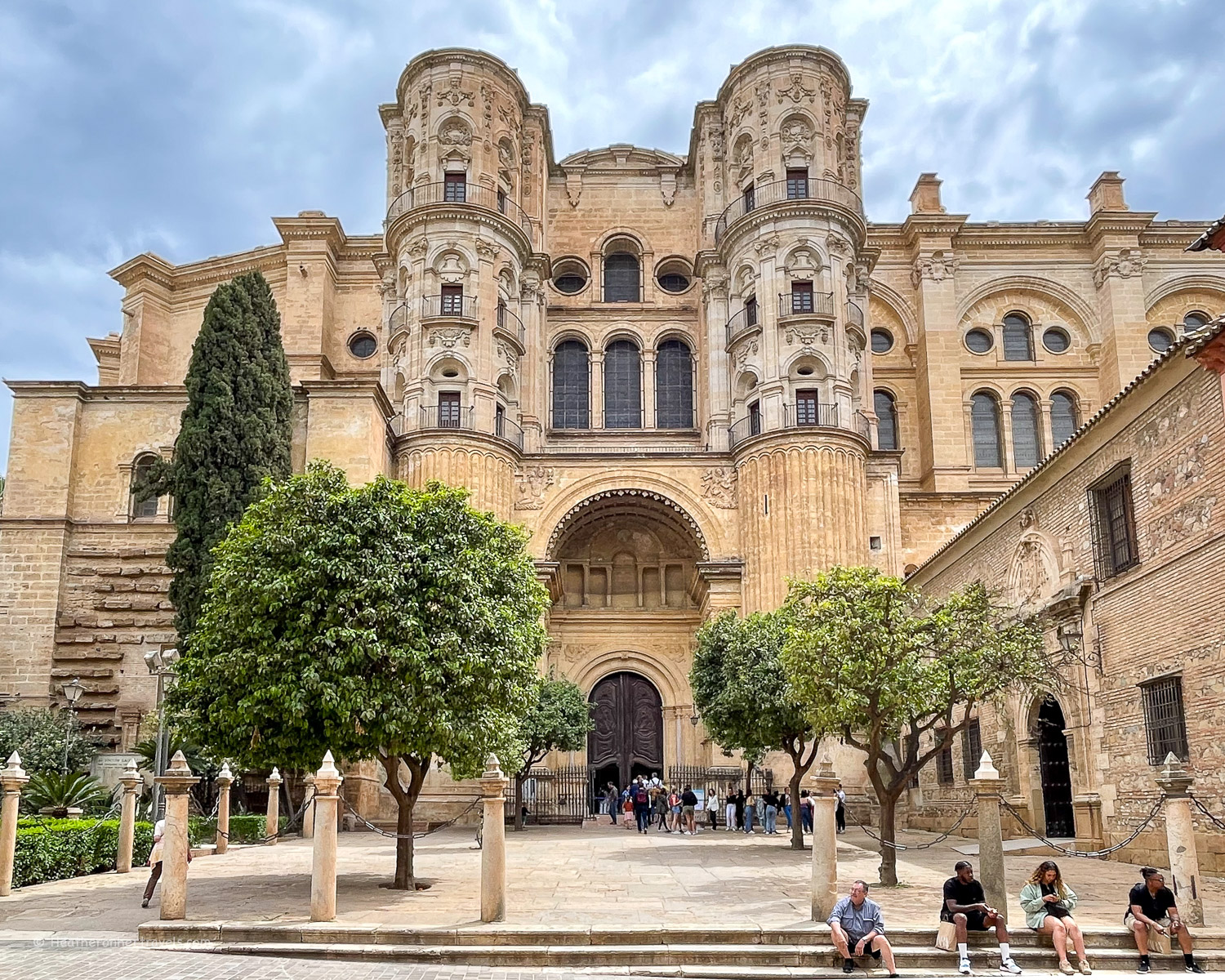
- Enjoy the many museums and galleries – there are numerous art galleries and museums, often housed in stunning palacios – our favourites are the Automobile and Fashion museum and the Carmen Thyssen Gallery.
- Caminito del Rey – if you make one day trip from Malaga, it should be to the Caminito del Rey, a walkway that clings to the side of sheer cliff above the river.
- Malaga at Christmas – December is a magical time to visit, with Christmas lights and free light shows throughout the city. Read my article about all the festive things to do in Malaga at Christmas.
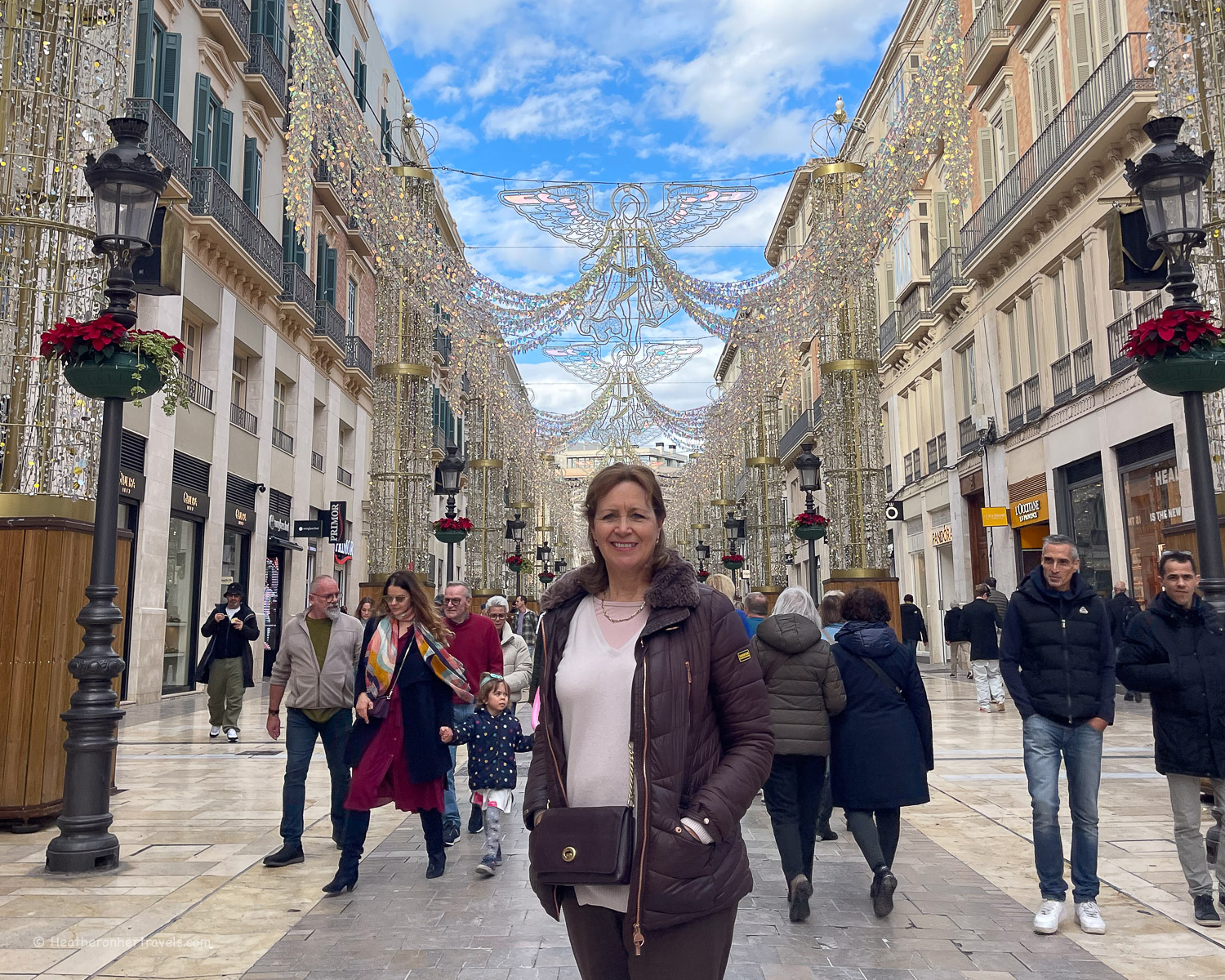
Essential Planning for Malaga
Hotels: We recommend staying close to (but not necessarily in) the historic centre. Try Ibis Malaga Centro Ciudad (budget), AC Hotel Malaga Palacio by Marriott (mid-range) or Palacio Solecio (luxury)
Attractions: Check availability for the Alcazaba and Picasso Museum, as tickets may get booked up at busy times.
Tours: Book this 2 hour city walking tour, if you’d like to get your bearings on the major Malaga sites.
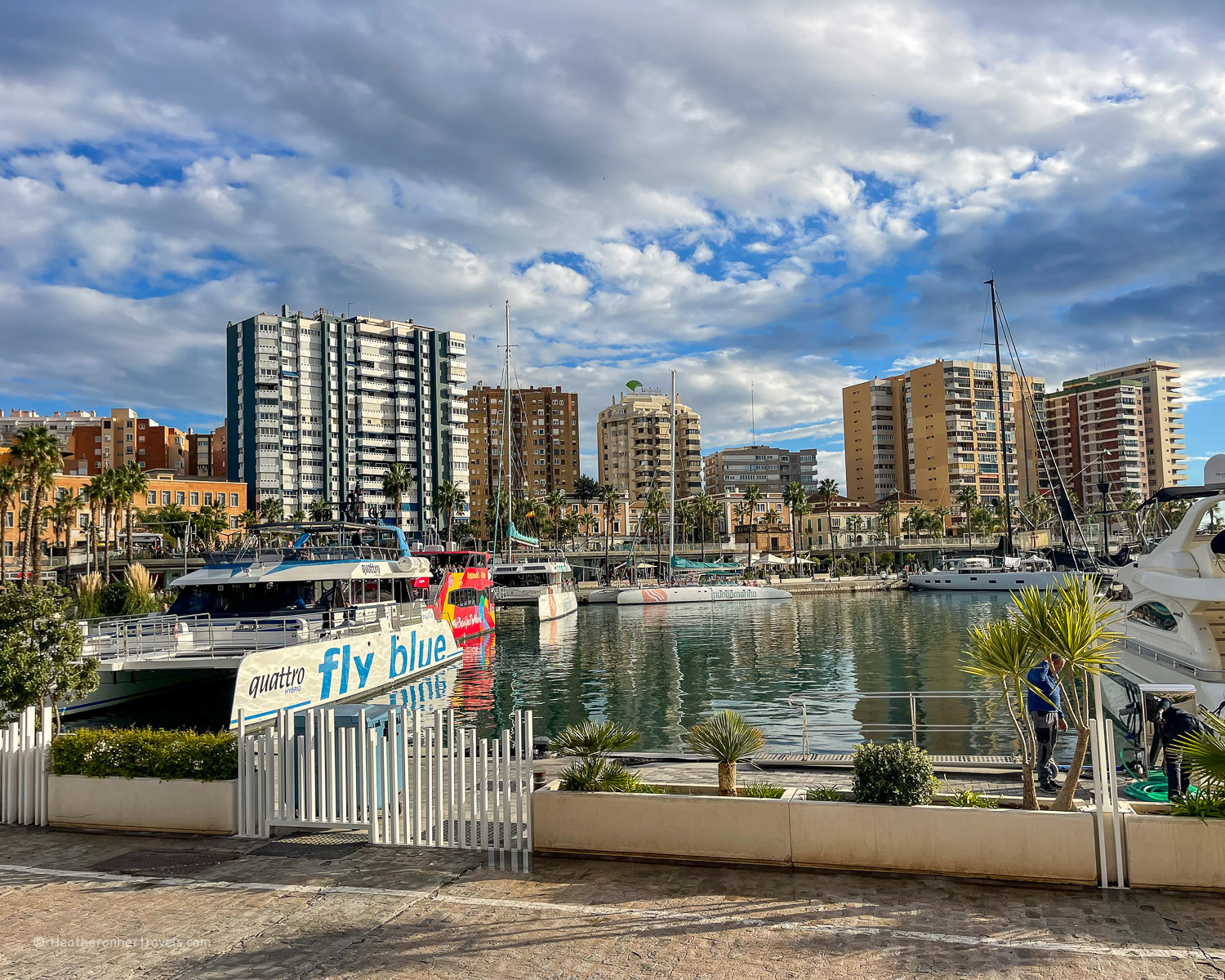
Now let’s take a look around the city of Malaga.
Malaga’s Historic Old Town
Much of central Malaga is pedestrianised, giving you even more chance to enjoy the historic centre with its narrow streets, shady squares and charming older buildings. Malaga’s main sites are concentrated in this very walkable old town area, so it’s the obvious place to start your visit to the city.
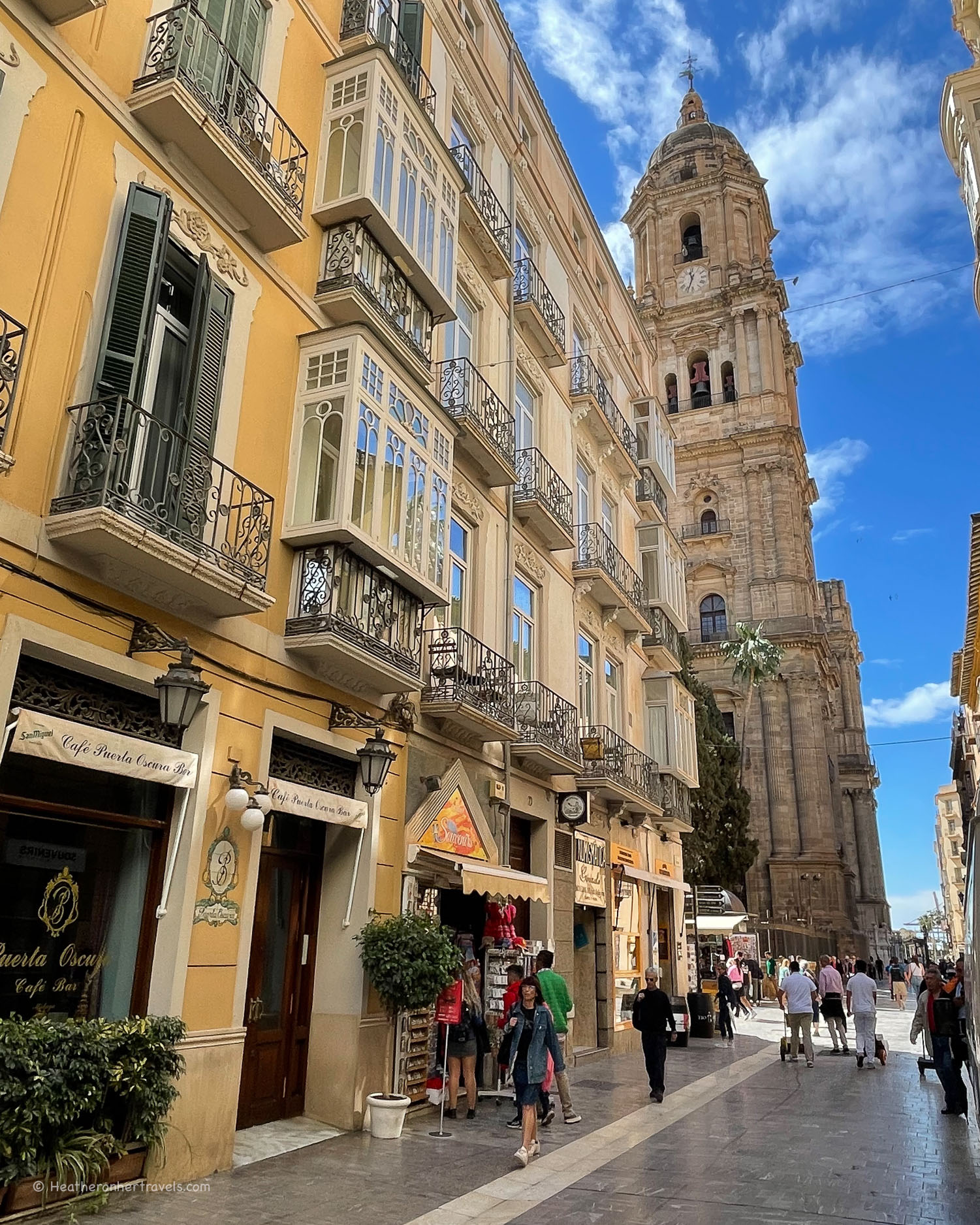
One of the main squares is Plaza de la Constitucion, with its elegant marble fountain and pretty surrounding buildings. From here, the wide boulevard of Calle Larios runs towards the port and is a great place for shopping, since many of the upscale brands are located here.
For a more local feel, wander around the narrow streets around Museuo Carmen Thyssen to find coffee shops and smaller boutiques. As you head towards Malaga Cathedral, the streets become busier, as this is the tourist heart of Malaga, nevertheless there are numerous pleasant restaurants and bars.
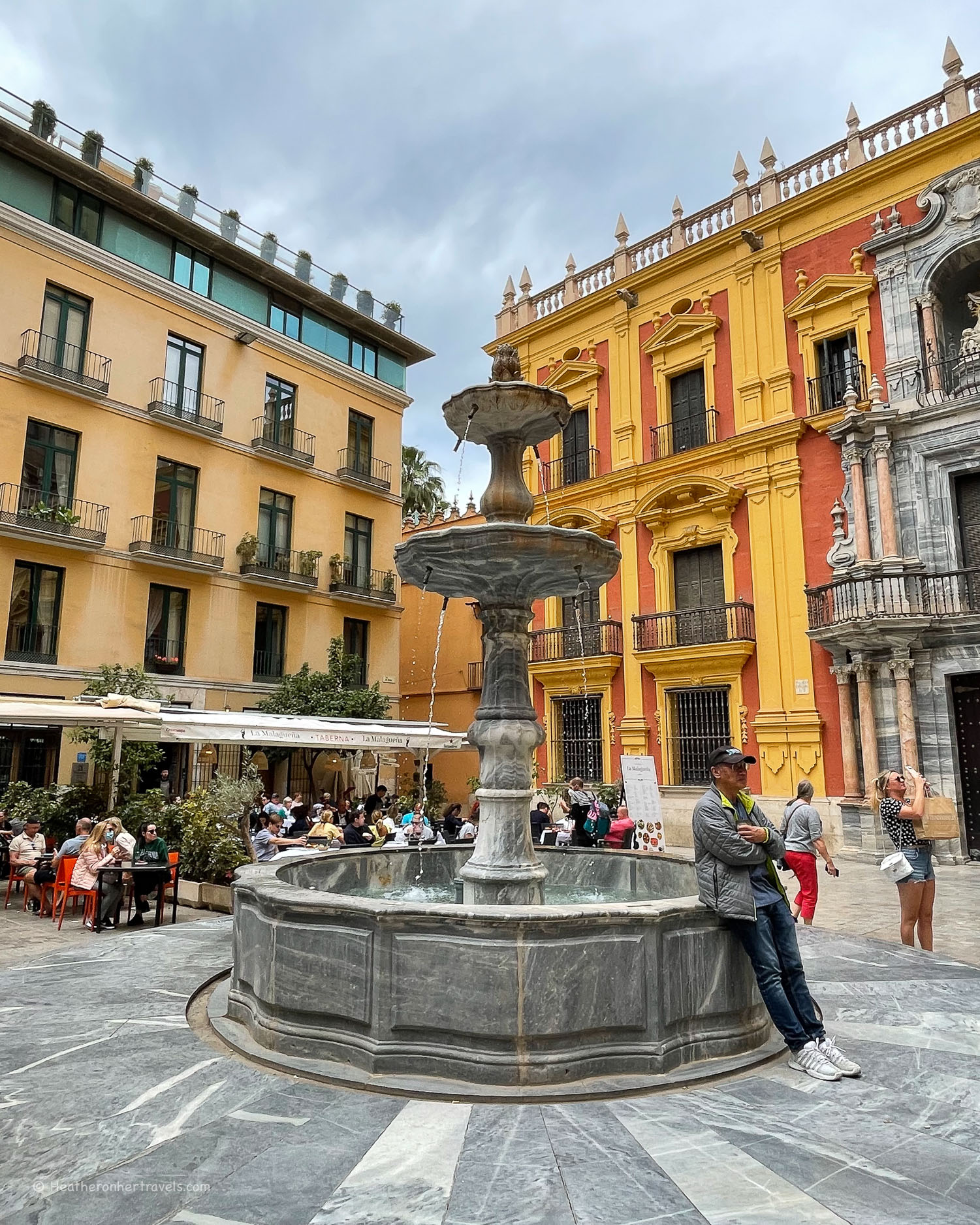
Close to the cathedral is the Roman Theatre and Picasso Museum, and many of the beautiful Palacios have been converted for use as hotels and museums.
This 2 hour city walking tour is a good way to get your bearings in the historic centre and see some of the main sites.
While Malaga’s Historic Centre can be packed in summer, it’s just as magical (and less crowded) in Spring and Autumn, when Malaga’s sunny climate allows for al fresco dining. At Christmas the city has a wonderfully festive feel, with light shows on Calle Larios and projections on the walls of the Cathedral.
Read about our visit to Malaga at Christmas and all the festive things you can do.
Best place to stay in the Old Town
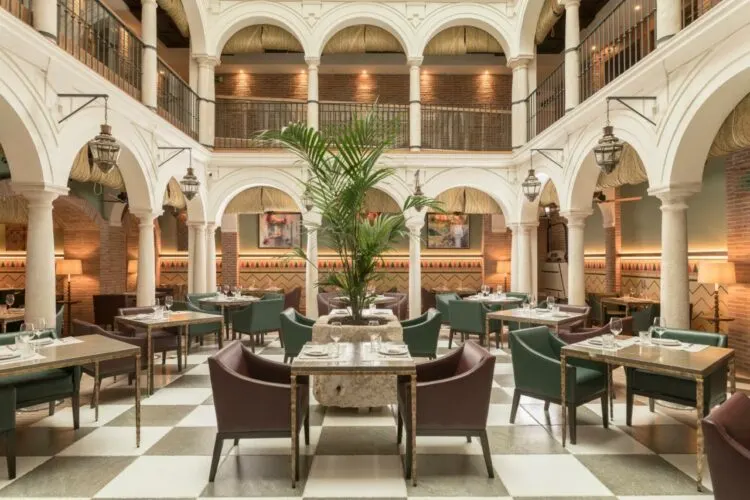
Stay at the Palacio Solecio – a small luxury hotel in the heart of Malaga’s historic centre
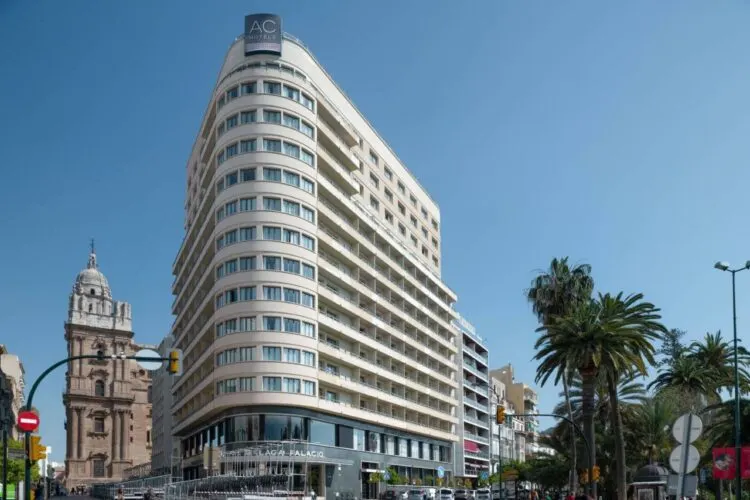
The AC Hotel Malaga Palacio by Marriott is a smart modern hotel that’s well located in Malaga’s central area
Muelle Uno and the Port
An essential part of the Malaga experience, is to stroll along the shaded boulevard that runs between the modern port and the Centre Pompidou. Here you’ll find plenty of terrace bars and rows of souvenir stalls, with a view of the large harbour.
It’s worth a stop at the coloured glass cube of the Centre Pompidou, to see its collection of modern art. Afterwards browse in the nearby street market for holiday fashions and souvenirs.
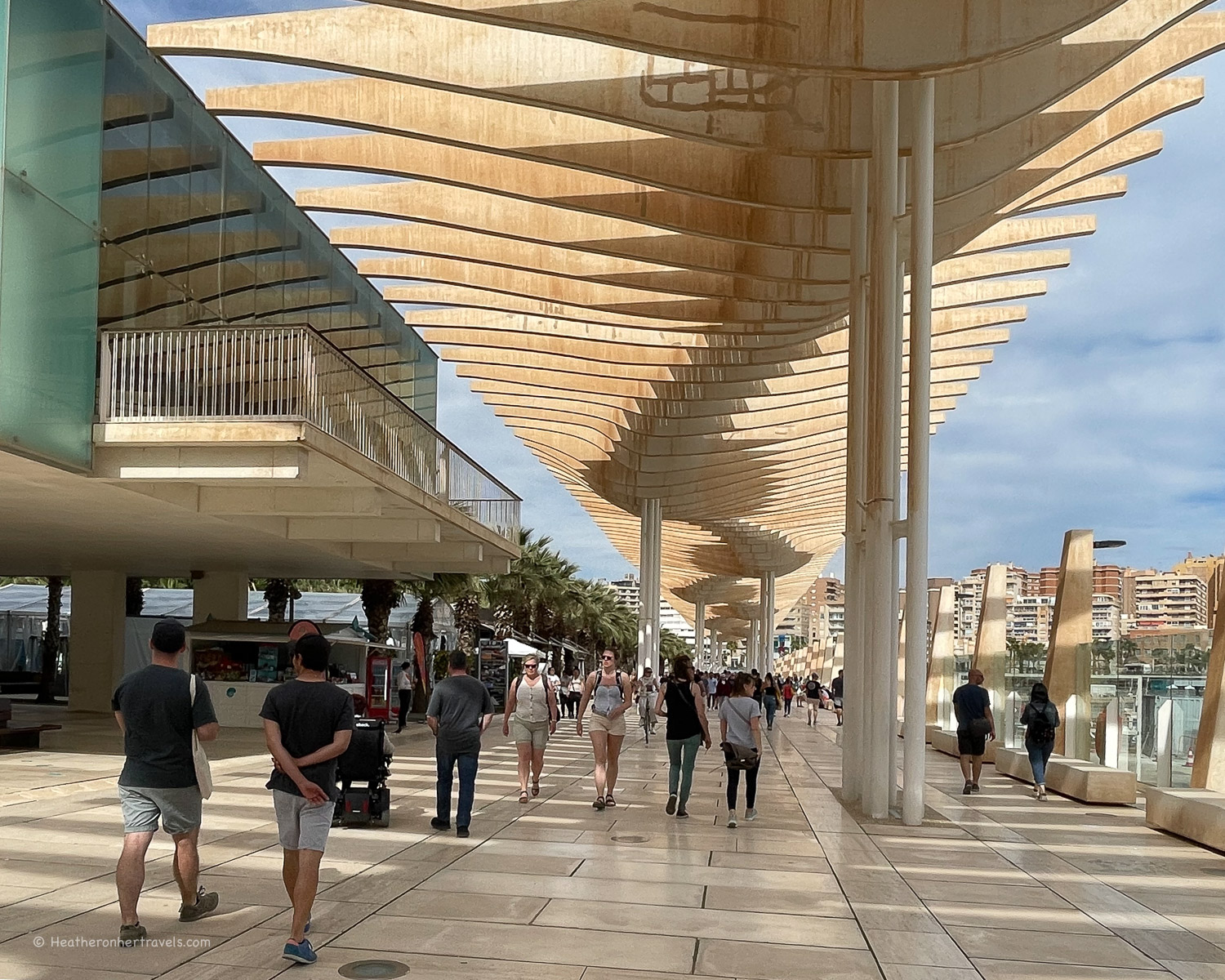
Turn the corner to continue past Muelle Uno, with its tourist oriented shops and cafes, designed to please the cruise passengers who dock near here. After walking under the palm trees, where the swanky yachts moor up, you’ll reach La Farola Lighthouse, one of Malaga’s landmarks.
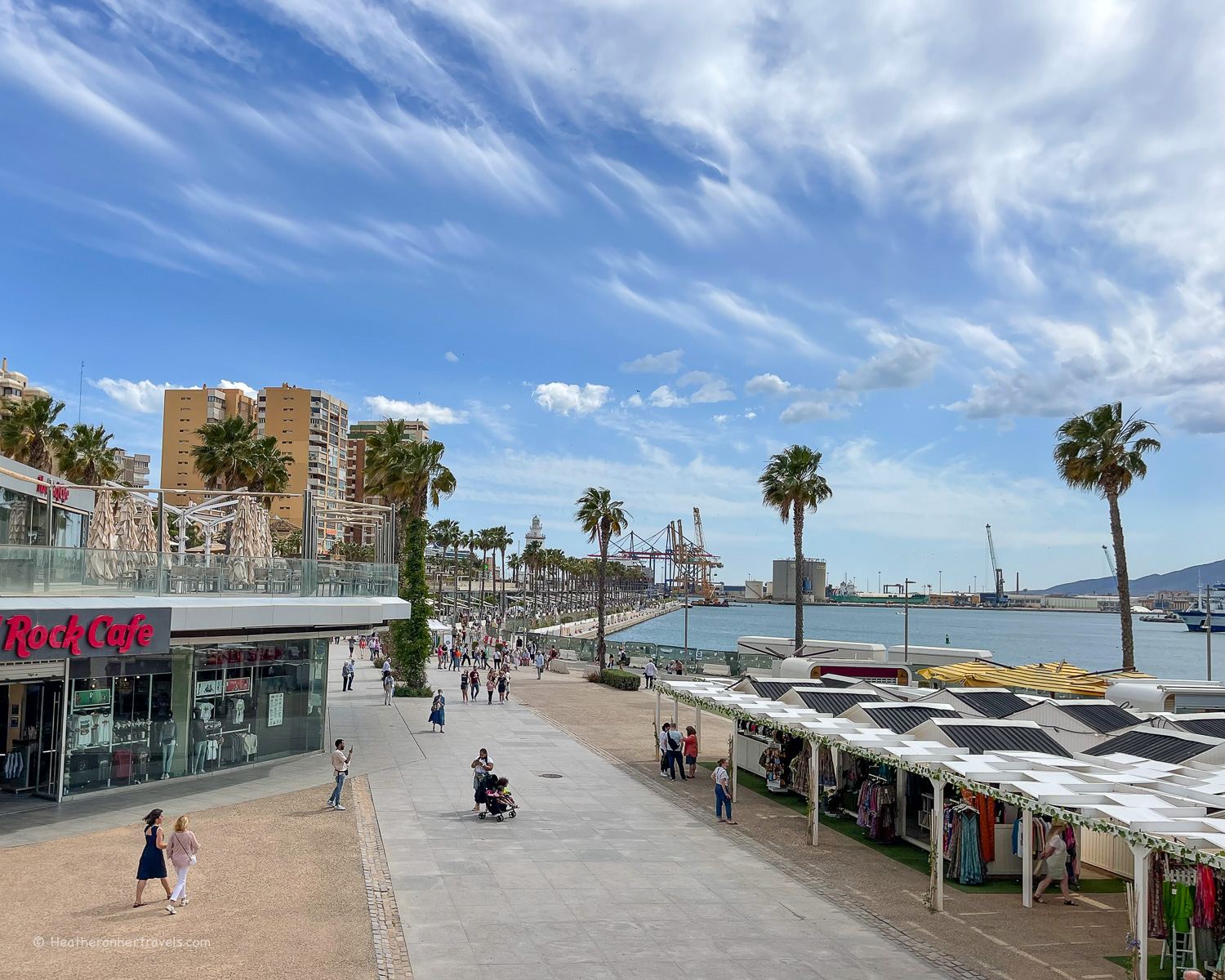
From here, cross over onto Malaga’s main beach where you can stop for refreshments in one of the Chiringuito beach bars, and watch the city at play.
Malagueta Beach
Malaga’s main city beach of La Malagueta offers a broad stretch of sand, backed by grassy areas and palm trees. The promenade that runs behind the beach is a favourite place to stroll, cycle or roller-skate, since this path stretches the length of the beach and beyond.
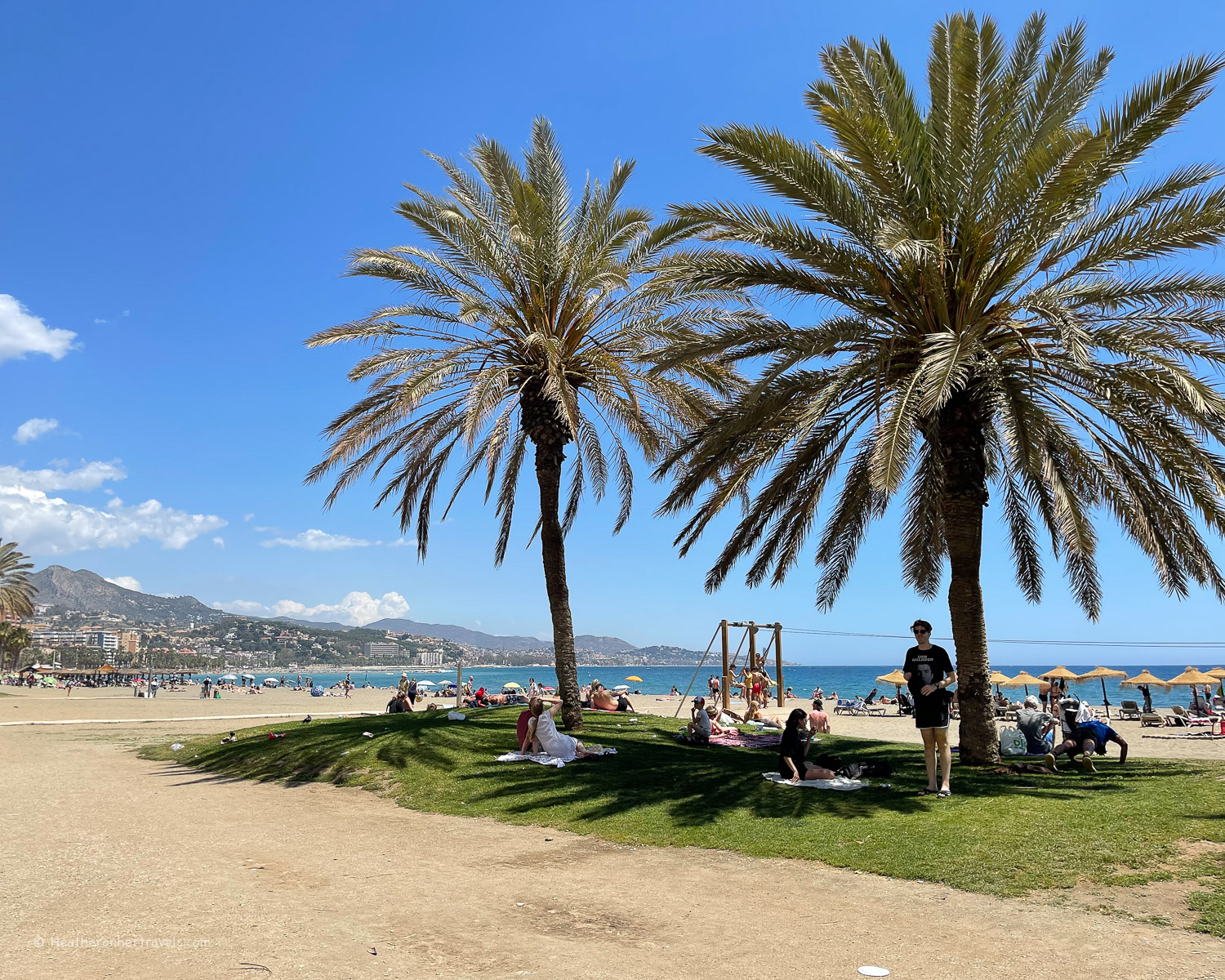
There are a number of Chiringuito beach bars along the beach, where you can buy drinks and order seafood with the sand between your toes. Look out for their traditional charcoal grills, where fresh sardines are grilled on skewers or ‘Espetos’, putting out an appetising aroma.
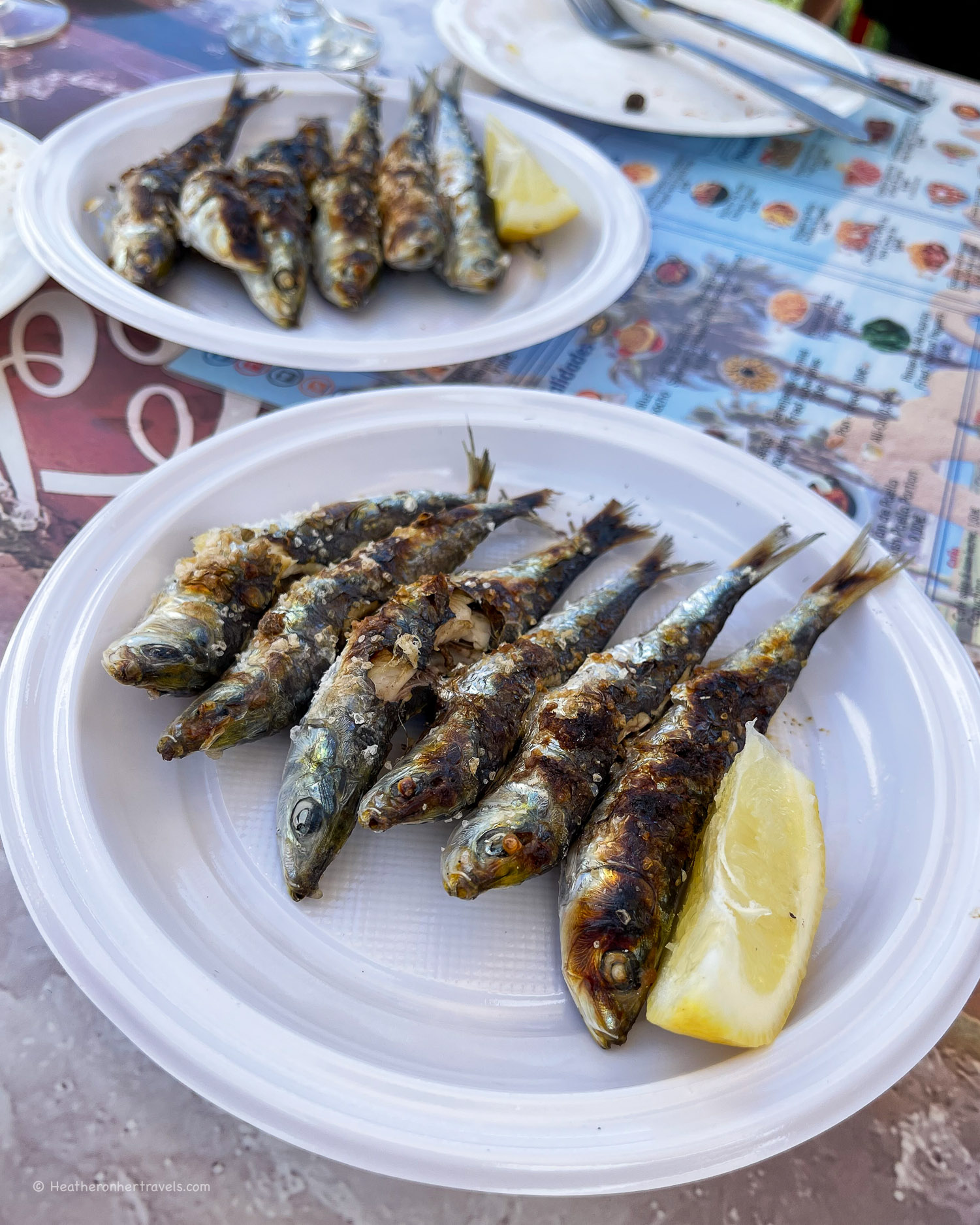
As a Blue Flag beach, the water is clean, shallow and normally calm here, for easy swimming. La Malagueta is well provided with facilities, such as sunbeds, toilets, showers, childrens’ play areas and summer activities.
Alcazaba Moorish Palace
Visit the Alcazaba, the beautiful Moorish palace on the hill, with fountains and courtyard gardens. Built in the 11th century by the Arab rulers of Malaga at the time, the Alcazaba was designed both for defence, and as the residence of Malaga’s governor.
You can take this guided tour of the Alcazaba including tickets.
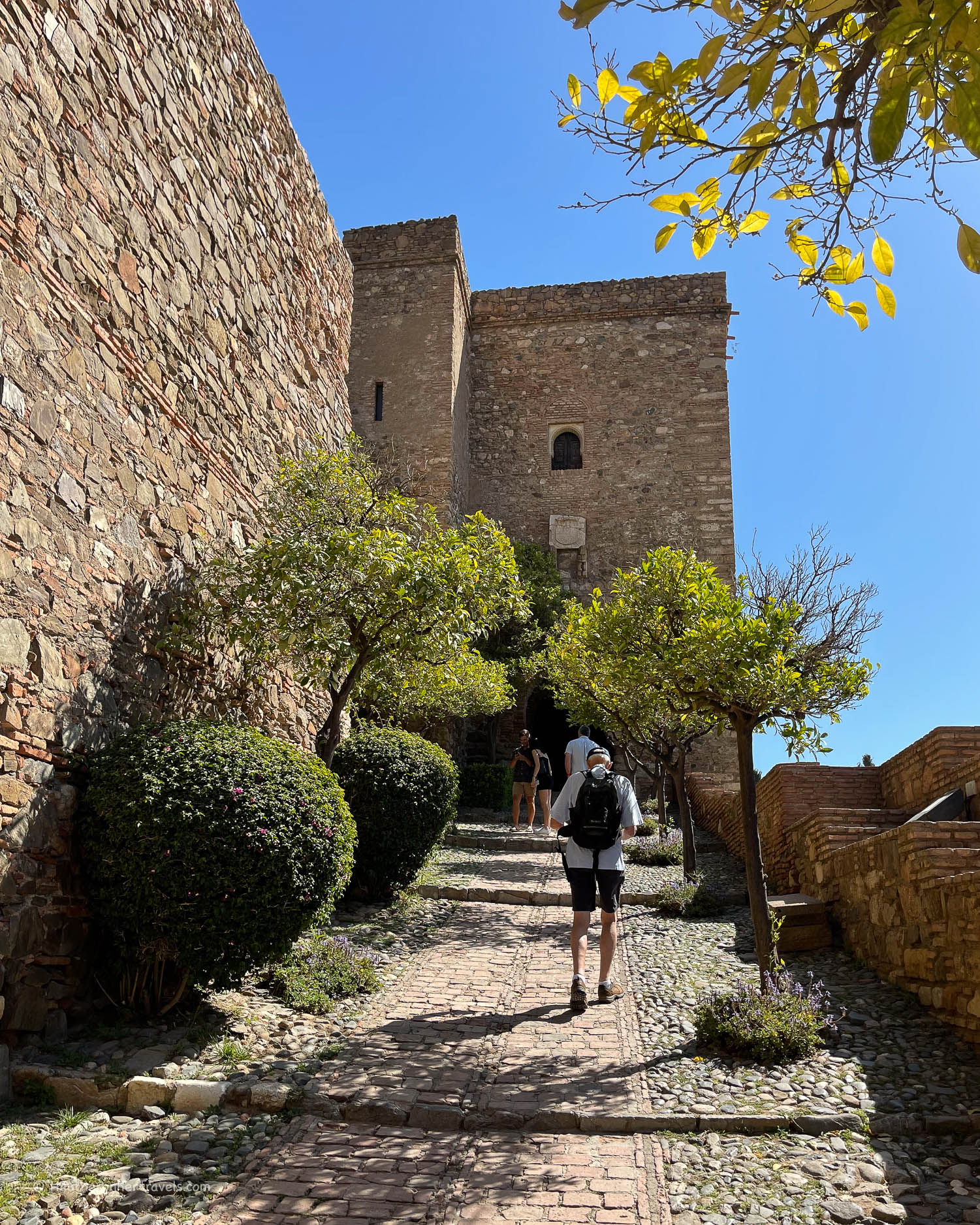
Walk up the hill, through a series of protective gateways with high walls and watch towers to reach the inner courtyards and formal gardens. The small courtyards of the palace, with their ornamental pools, tiled decoration and shady porticos, were designed to stay cool during Malaga’s hot summers.
While smaller than the Moorish palaces of Seville and Grenada, the Alcazaba of Malaga is a beautiful historic monument that has been well restored, and well worth a visit.
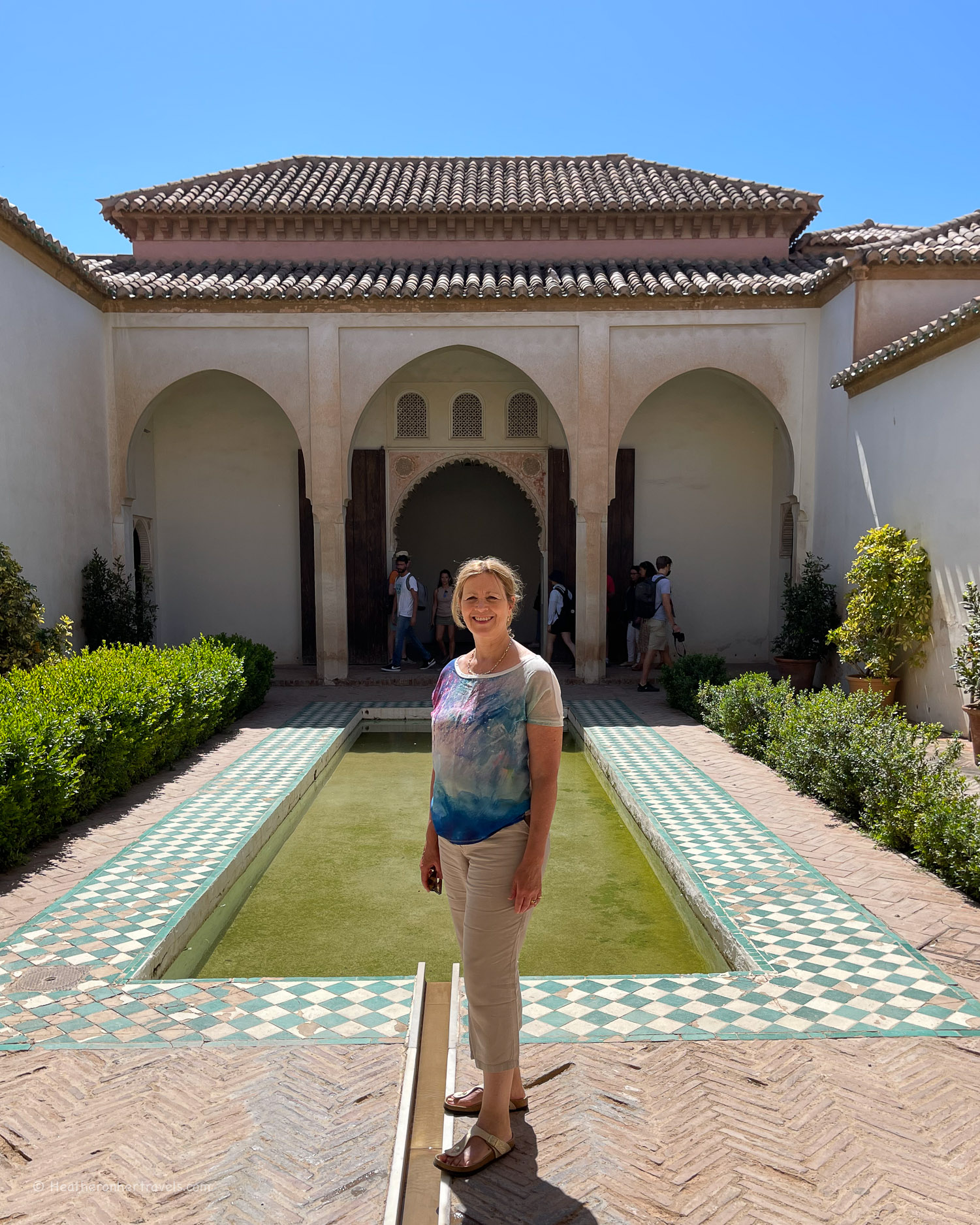
The entrance and ticket office are just above the Roman Theatre and the Alcazaba is open daily. You can also buy a combined ticket, together with the Gibralfaro Castle that sits a little higher up the hill.
More info: Alcazaba Malaga Website
Gibralfaro Castle
The Gibralfaro castle is set on the hill immediately above the Alcazaba, and can be entered with a joint ticket.
It is best reached along a paved path leading steeply up from the Jardines de Pedro Luis Alonso, which are filled with bitter orange trees in fruit around Christmas. As you walk up the hill, there are some lovely views over the port, bullring and beach towards the sea.
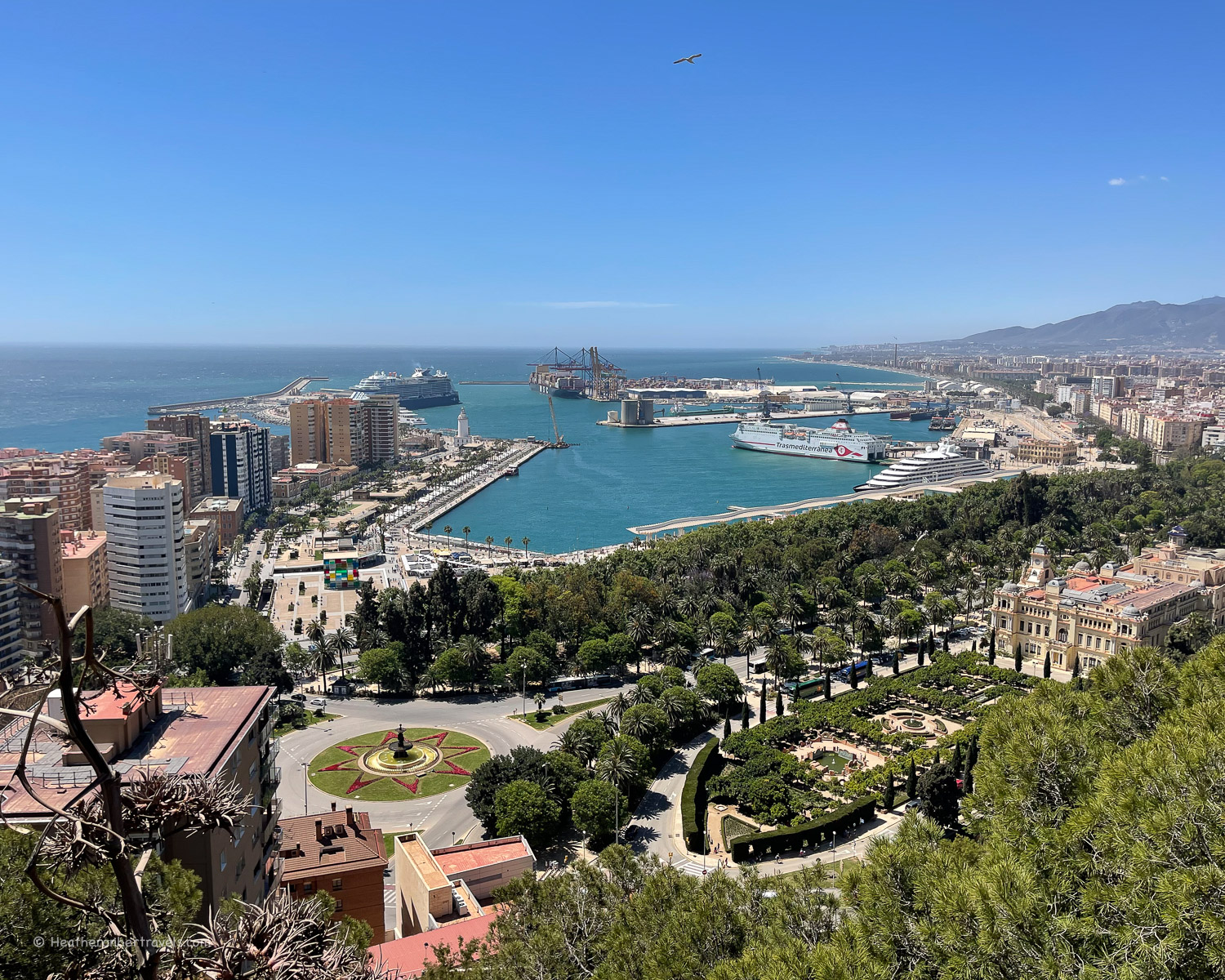
The castle was built in the 14th century as a garrison, and its strategic position at the top of the hill allowed it to protect the Alcazaba below. One of the main features of the castle are the thick defensive walls. You can walk along the top of the Bastion, to get wonderful views of Malaga town and the surrounding area. There’s also a small museum and a cafe/restaurant within the walls.
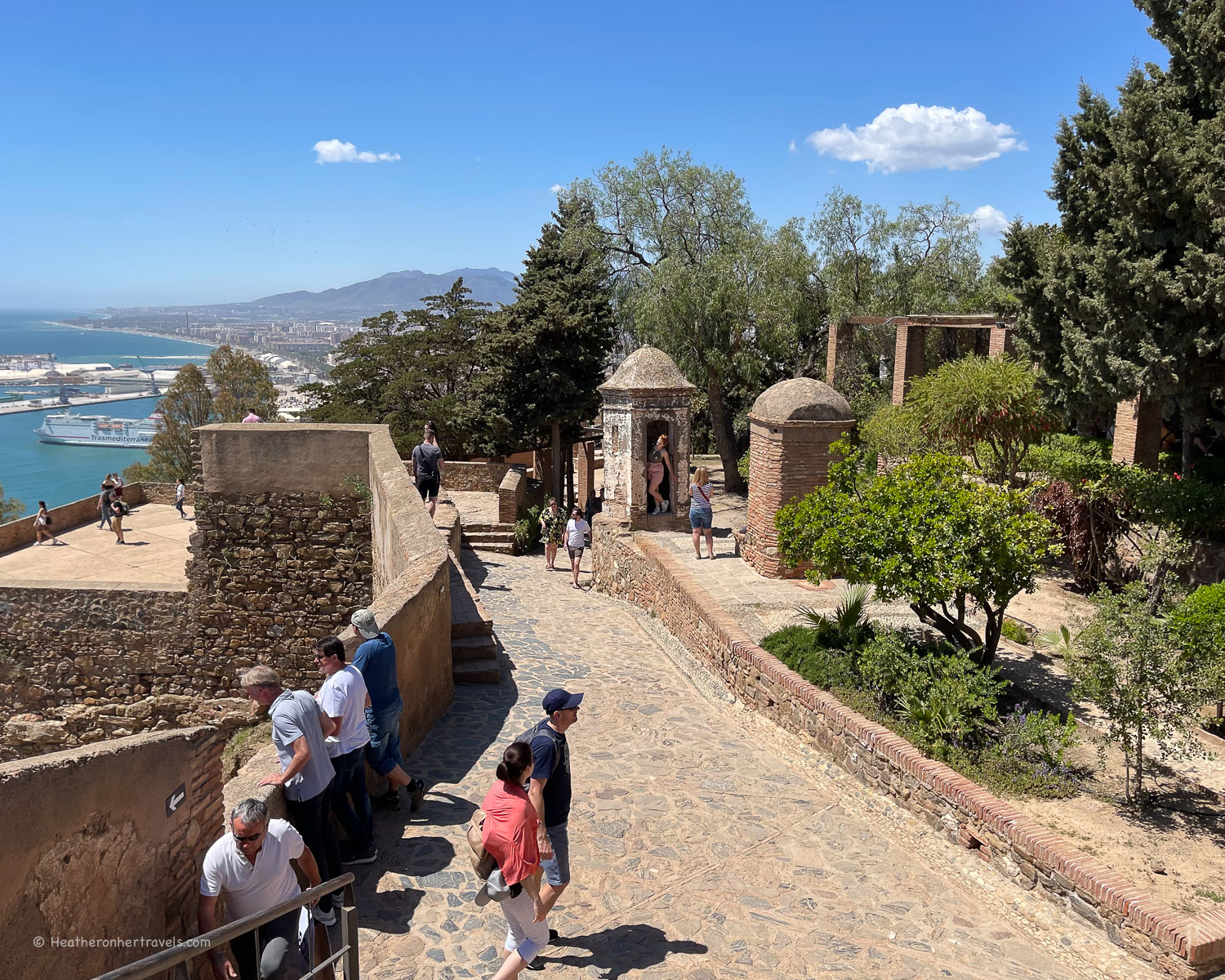
For those that might find the walk up from the town a little steep, it is possible to access the castle by taxi or the No 35 bus that stops outside the entrance.
Tip: If visiting on a hot day, take your time on the walk up the hill and be sure to take some water.
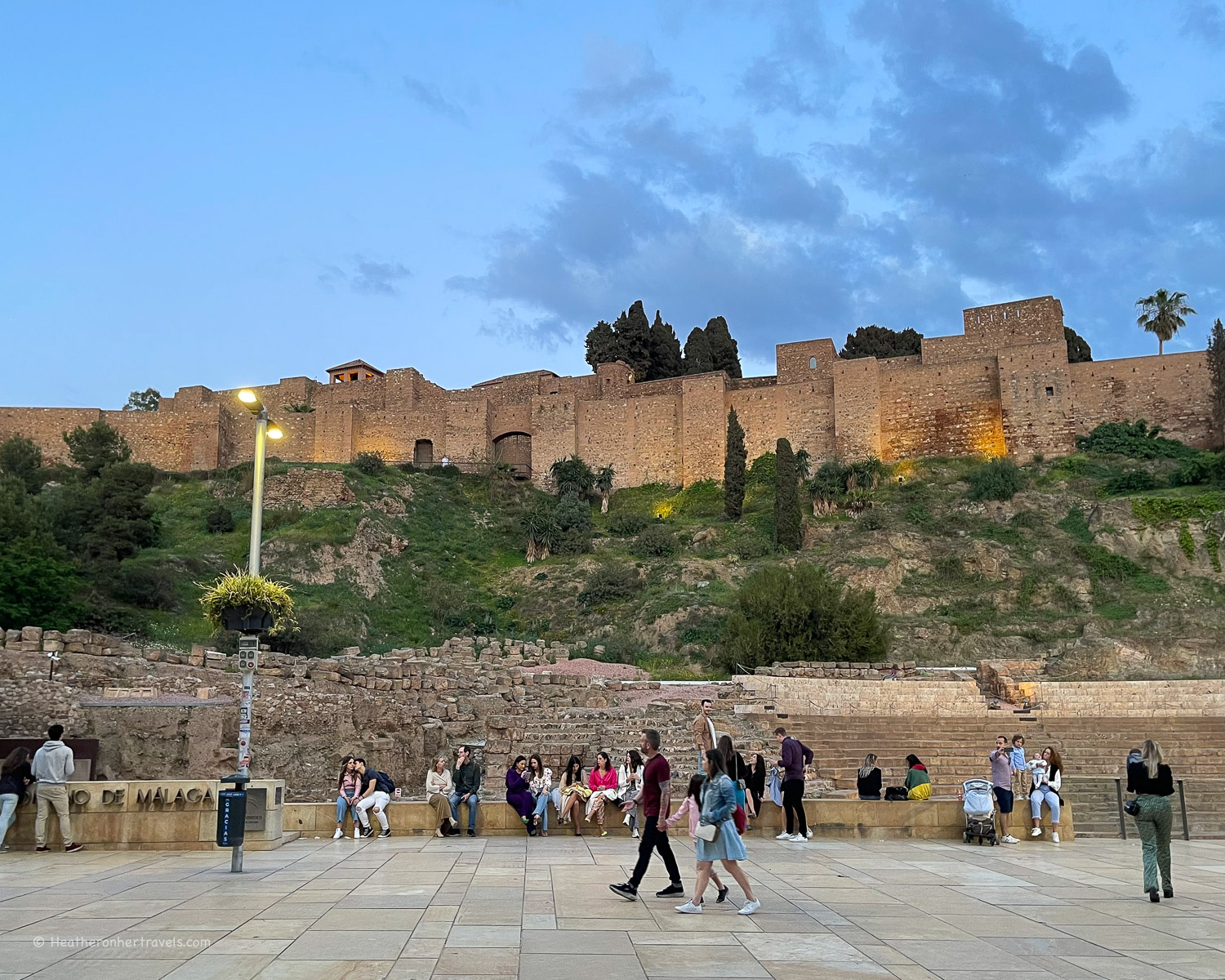
Roman Theatre
On the edge of the historic centre, the remains of the Roman Theatre date back to the first century BC, with a small museum to explain about its history. The theatre is set into the hillside and was discovered under another building in the 1950s, and gradually renovated in the 1960s.
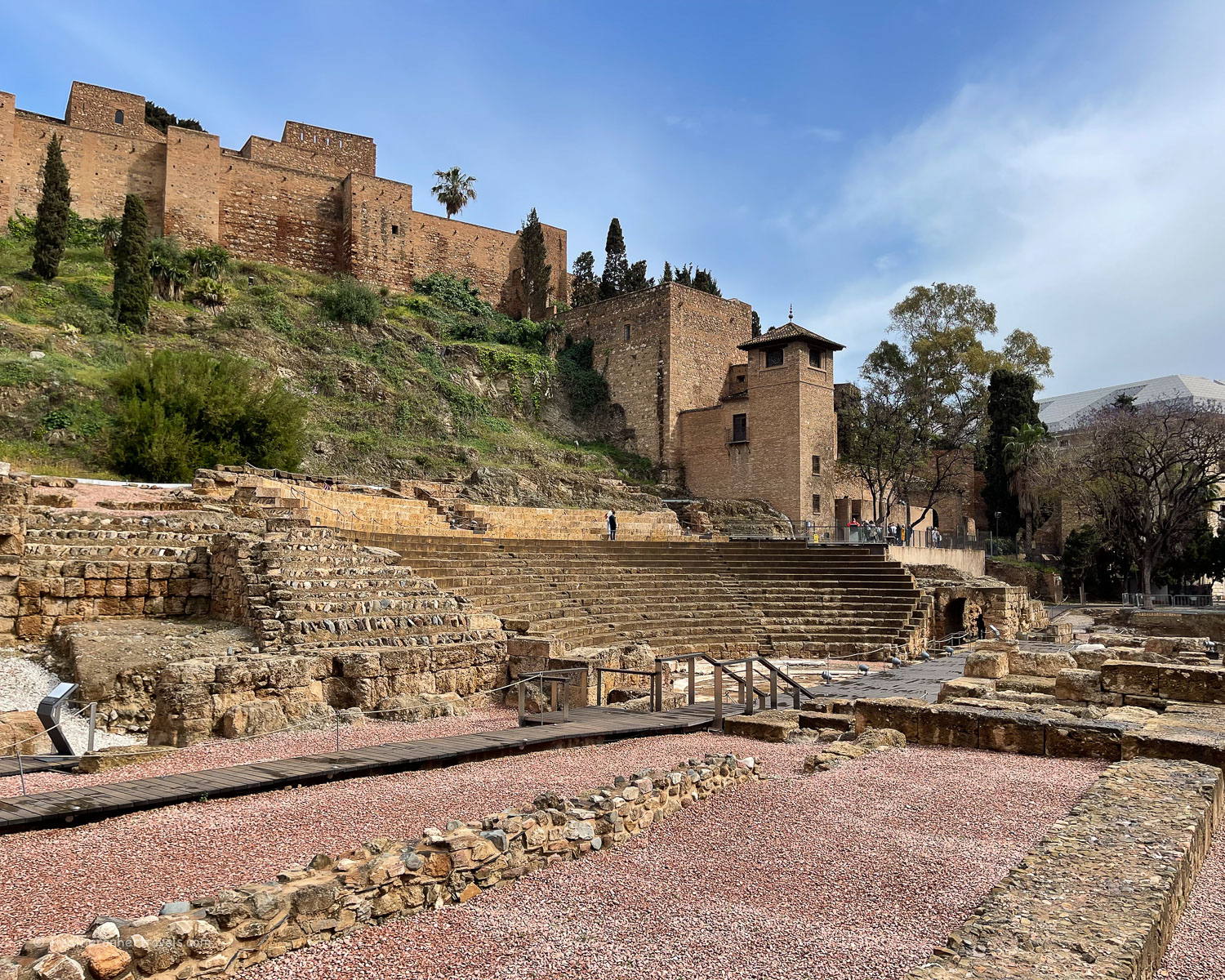
Well preserved Roman remains show a tiered seating area, orchestra and stage, which can easily be viewed from the plaza. To learn more, visit the small interpretation centre (free) and then walk through the site for a closer look, or enter past the Alcazaba ticket office, for a view looking down on the archaeological site from above.
Malaga Cathedral
Malaga Cathedral sits at the heart of the historic centre, and can be seen from almost every spot in the city. Dedicated to Our Lady of the Incarnation, the cathedral is one of the city’s most popular visitor attractions. It was built in the 16th century by the ‘Catholic Monarchs’, Ferdinand and Isabella on the site of a former mosque, after they reconquered Malaga.
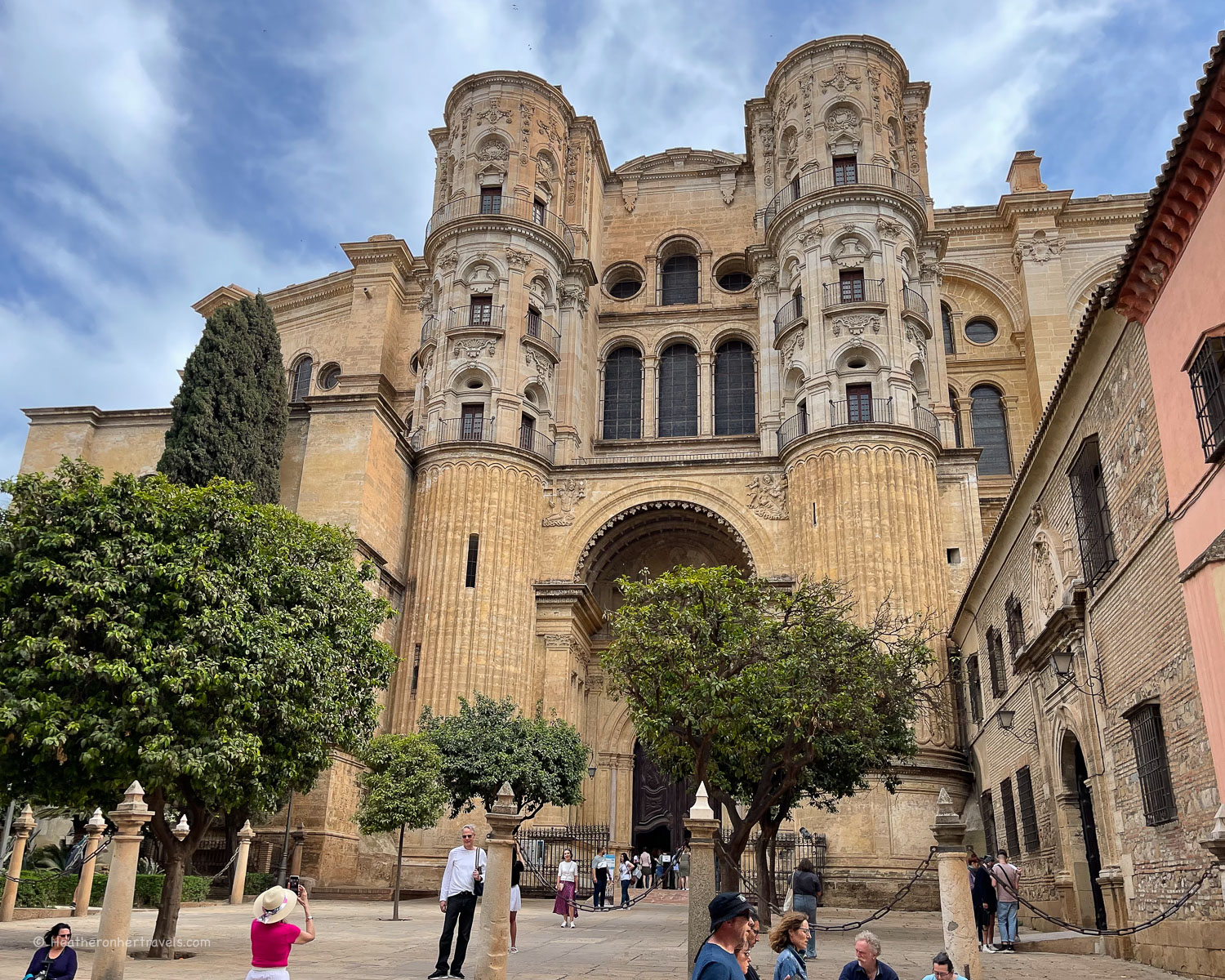
As you approach, you may notice that the cathedral has only one bell tower. The other was left unfinished due to lack of funds, giving it the local name of La Manquita or the one armed lady. There is a lot to see in the cathedral’s interior, with side chapels, stained glass windows, intricately carved choir stalls and a museum housing paintings and sculptures.
One of the highlights is a tour of the rooftop, with walkways that allow you to better understand the construction of the building. However, these tours are currently suspended due to roof renovation works.
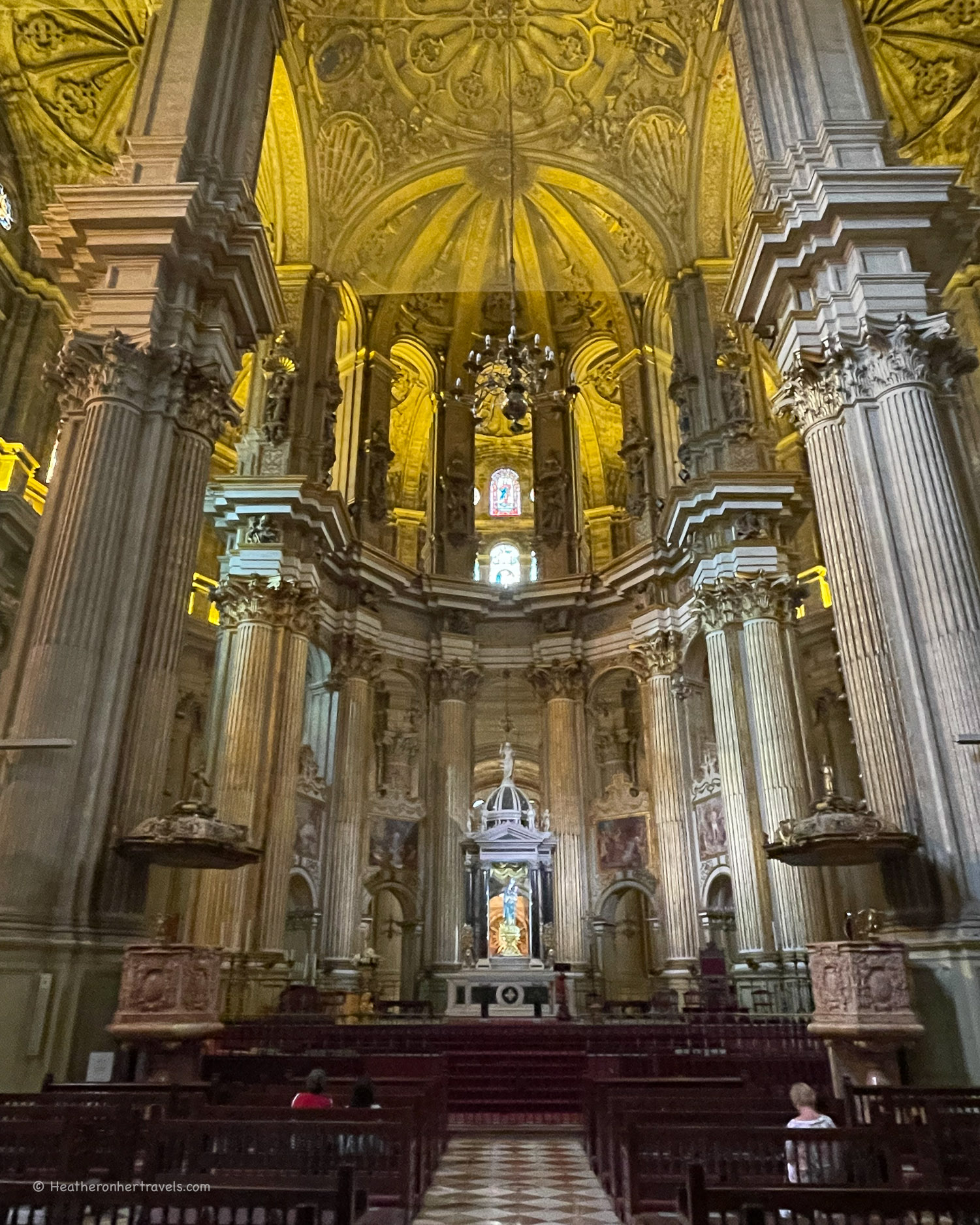
On our visit in December, we enjoyed visiting the famous Belenes or Nativity Scene in the cathedral, as well as watching the free light and music show that is projected against the tower of the cathedral every evening. Read about this and all the other things to do in Malaga at Christmas.
There is a fee to visit (unless you are attending morning mass) and an audioguide is included in the ticket price of €10.
Pedro Luis Alfonso Gardens
While the nearby Parque de Malaga offers a shady, green space close to the port, the Pedro Luis Alfonso Garden on the other side of the road is a smaller formal gardens offering a quiet space to relax.
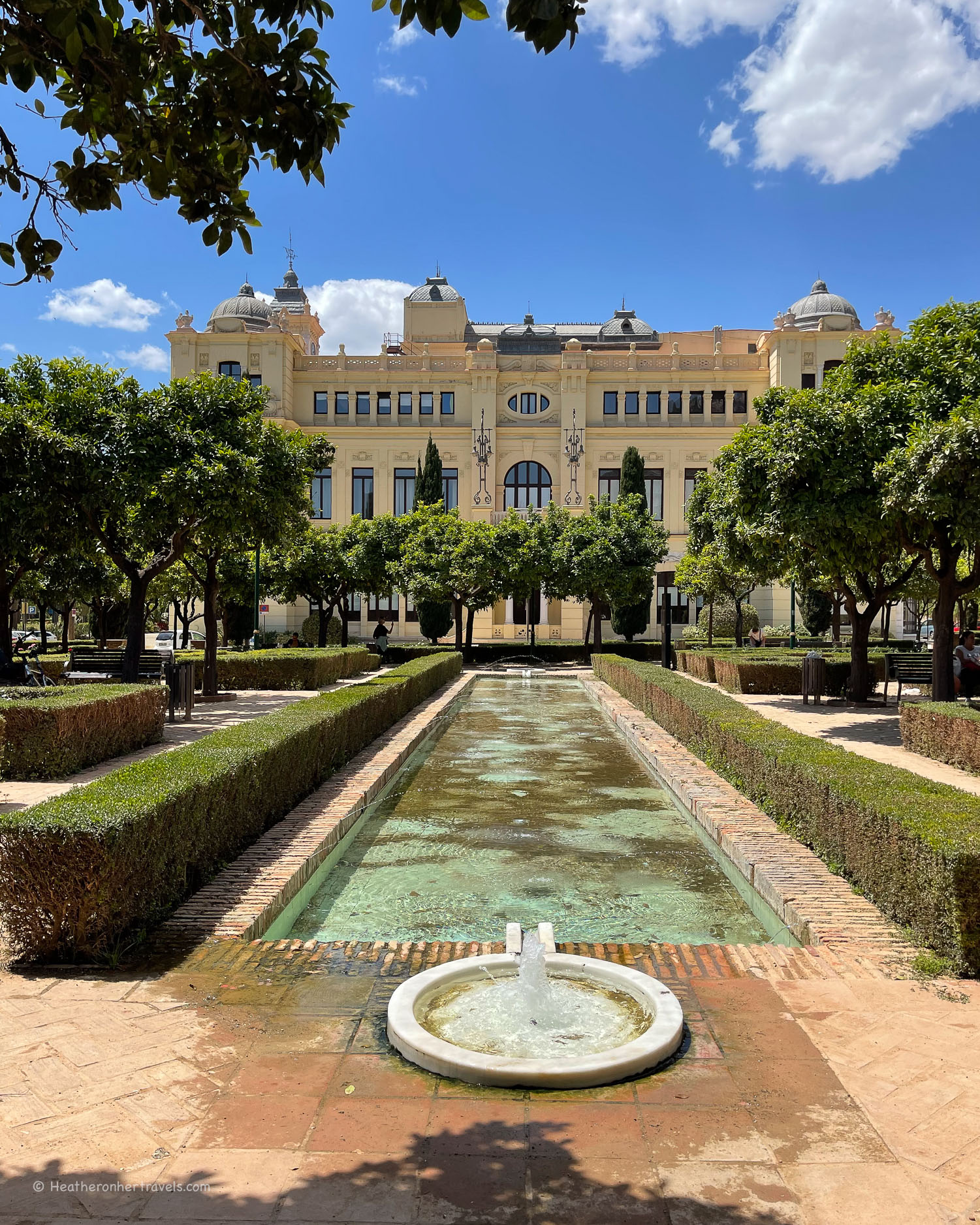
The design is reminiscent of the Moorish gardens of the region, with geometric parterres, hedges and pools, planted with groves of shady orange trees. In between the hedges are some colourful floral plantings, and we enjoyed the fragrance of bitter orange fruit on the trees, when we visited in December.
Atarazanas Market
In the centre of Malaga, the covered Atarazanas Market in the centre of Malaga is a feast for the eyes. Colourful displays of fruit, meat and fish give you a sense for what’s fresh and in season.
The current market building dates back to the 19th century and is known for its attractive stained glass windows, depicting moments from Malaga’s history.
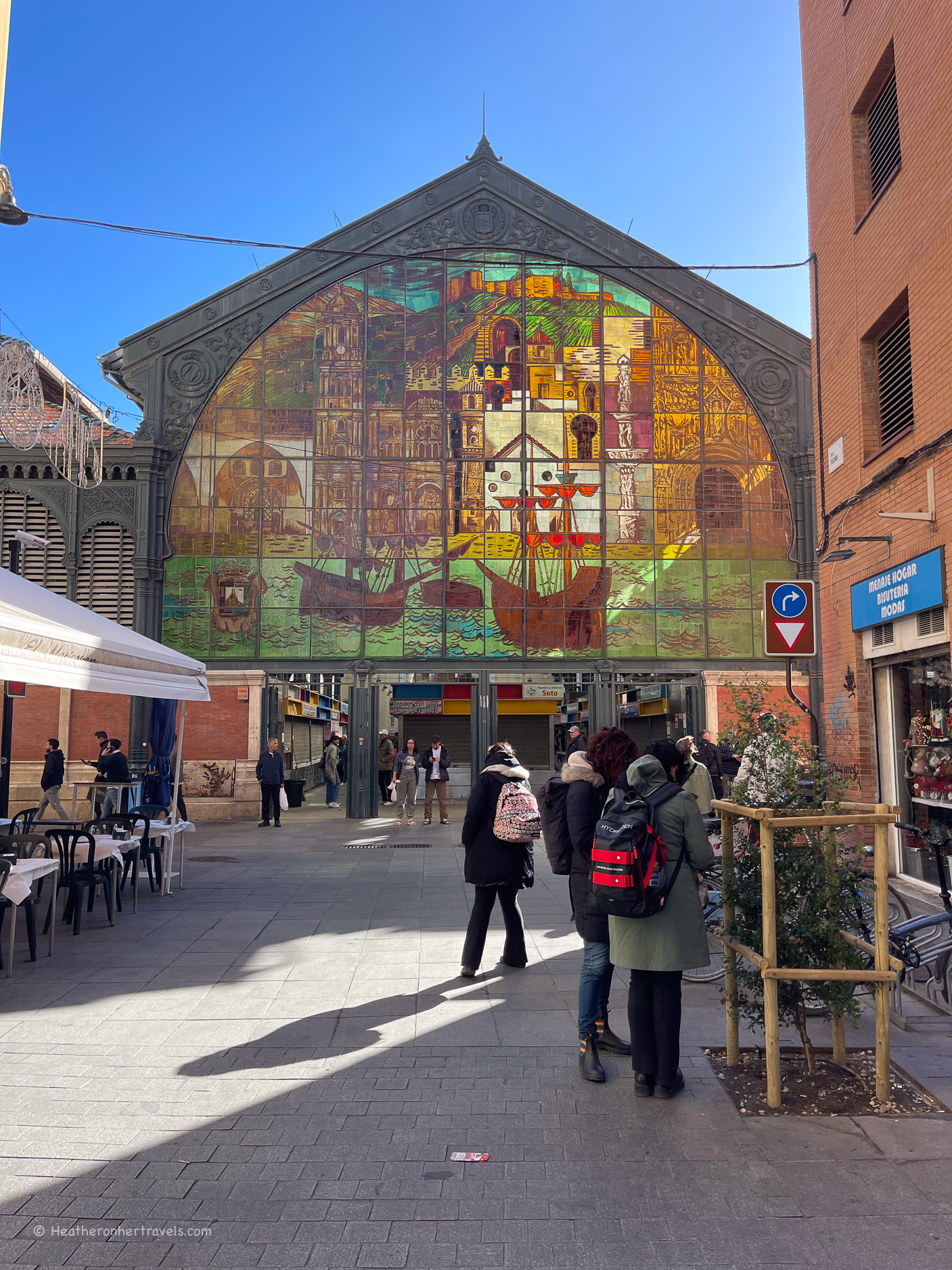
The market is also a good place if you want to shop for some Spanish foodie souvenirs at the deli or charcuterie counters. Look out for finely sliced jamon, which is sold in sealed packets, a staple of every Andalusian restaurant to nibble with a drink.

At the end of the market and just outside are stalls, bars and restaurants selling fried fish and other seafood dishes. This is a good place to stop for a snack or lunch, knowing that the produce will be fresh from the market.
Read about A mouthwatering walk around Atarazanas market in Malaga
Street Art in Soho
For a different perspective, wander around the Soho neighbourhood, which is close to the port. This area has been through a regeneration, and is now considered one of the most trendy areas of the city, with numerous bars and restaurants.

Known as the Barrio de las Artes (Neighbourhood of the Arts), Soho is a mecca for lovers of street art, with murals and smaller pieces from big names on many of the buildings.
The open air art gallery has QR codes by many of the pieces to inform you about the artists. For a downloadable street art map and more information about the project, visit the MAUS website (Malaga Arte Urbano Soho).
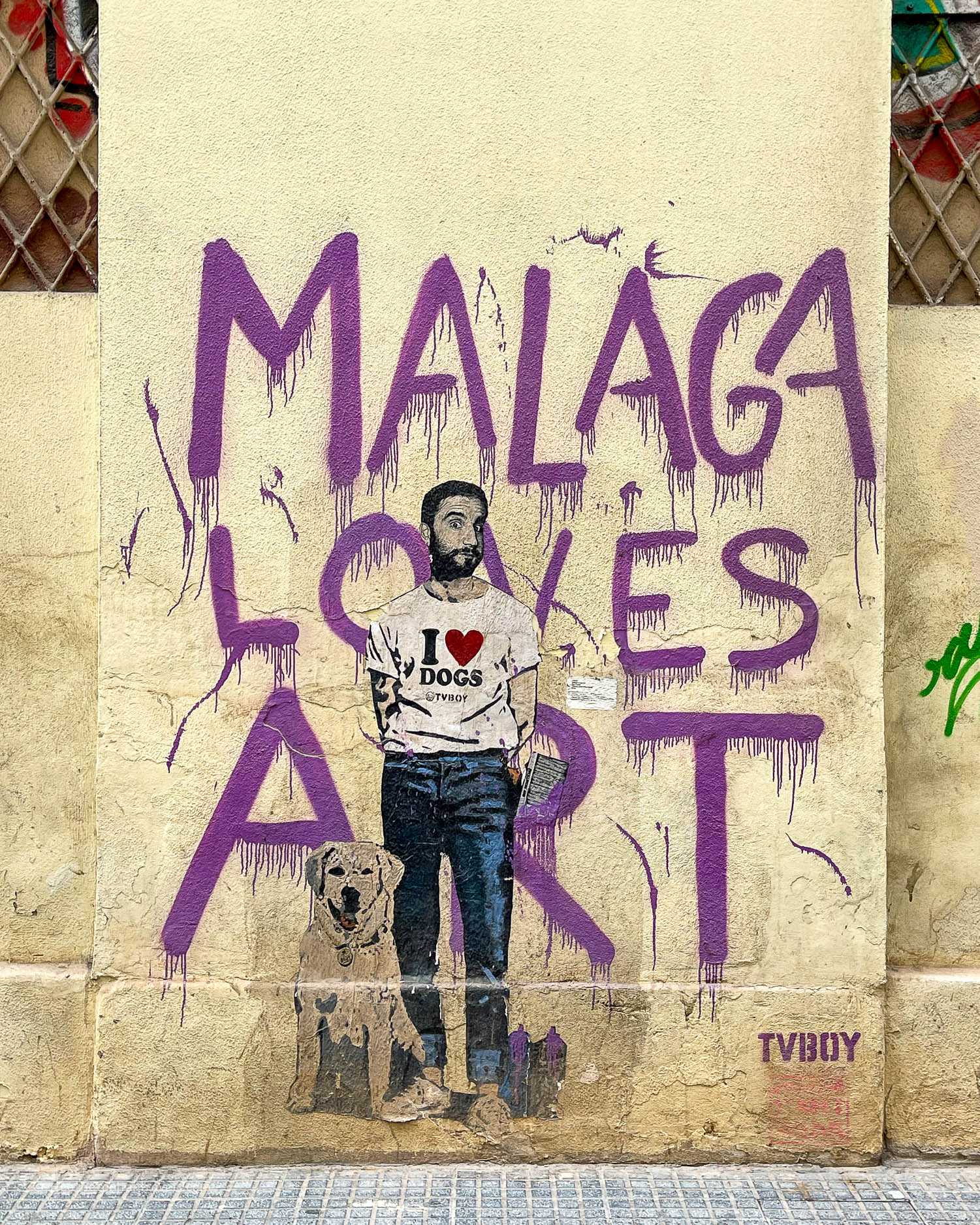
Due to its proximity to the bus and train stations, historic centre and port area, Soho is also a well located place to stay, with boutique hotels and rental apartments. We recommend Room Mate Collection Valeria or Soho Boutique Colón.
Picasso Museum
The Picasso Museum is one of Malaga’s most popular visitor attractions, housed in a beautiful 16th century Palacio Buenavista. Over 200 works by Pablo Picasso are on display, a permanent collection that spans his whole artistic career and represents the breadth of media in which he worked.
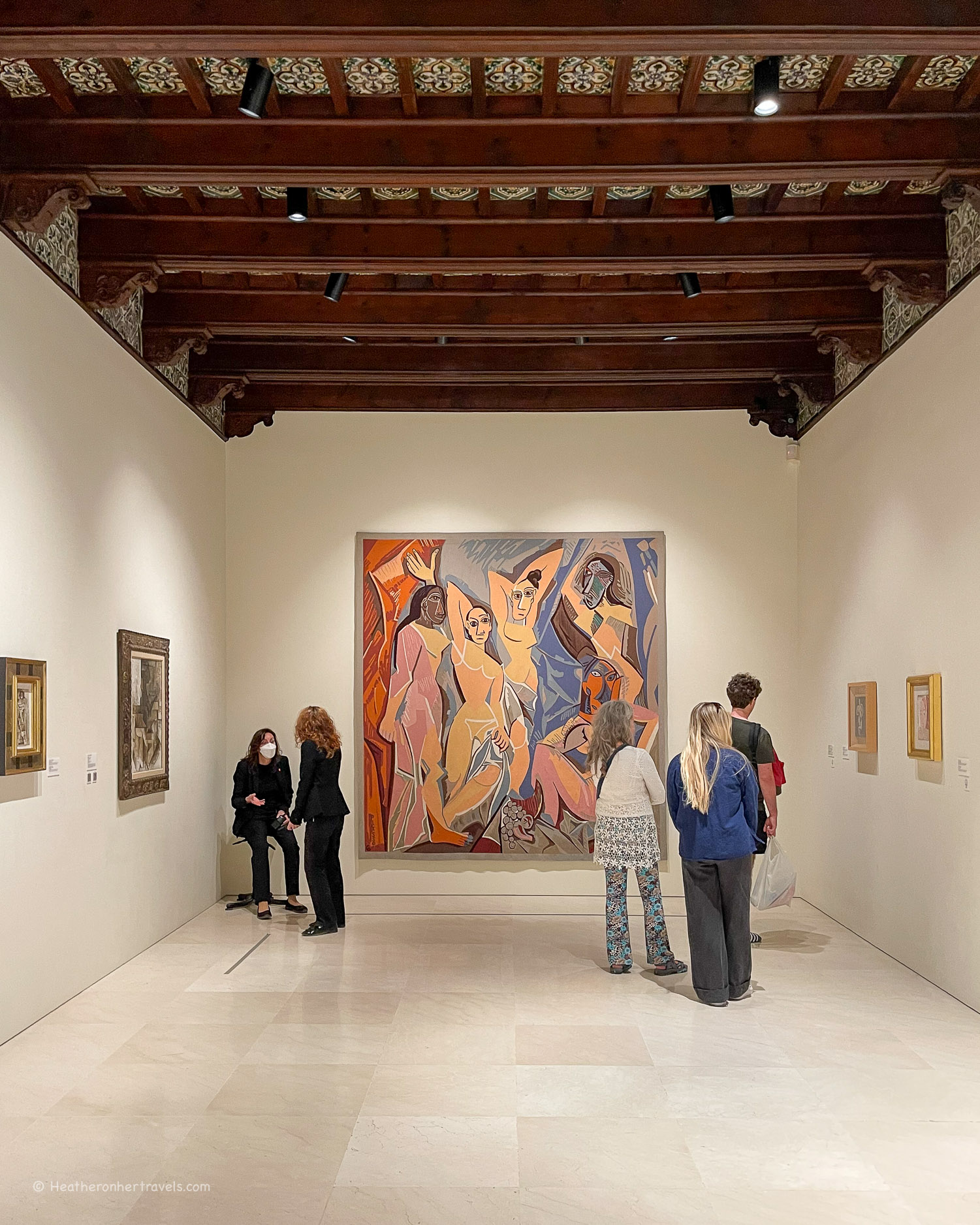
The museum also hosts changing exhibitions of other artists that have some connection to Picasso. At times the Picasso Museum can have long queues to buy tickets, so you may want to buy your tickets in advance here.
More info on the Picasso Museum website.
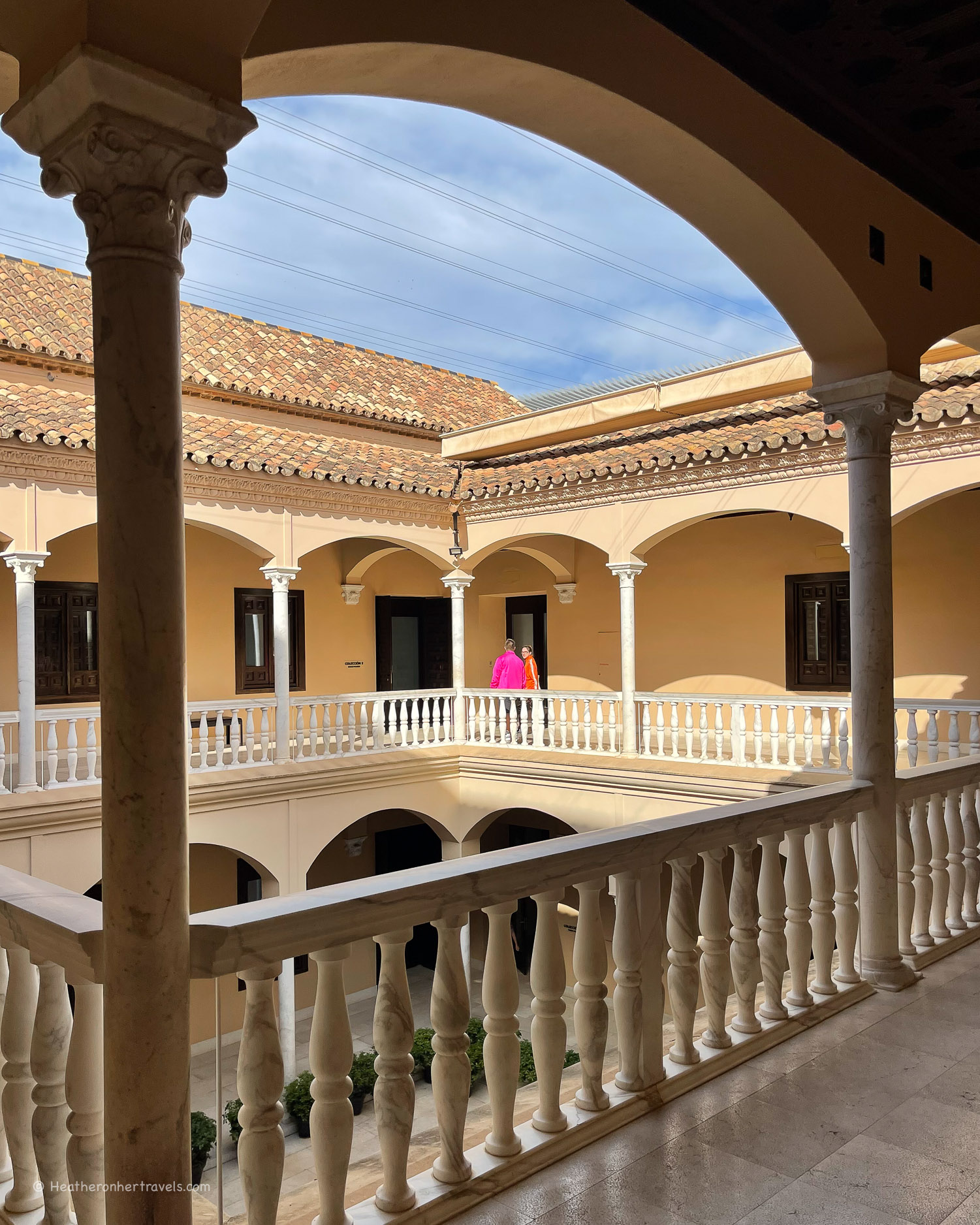
Picasso was born in Malaga, and you can also discover more about his life at the Casa Natal Picasso museum, located nearby in the house where he was born.
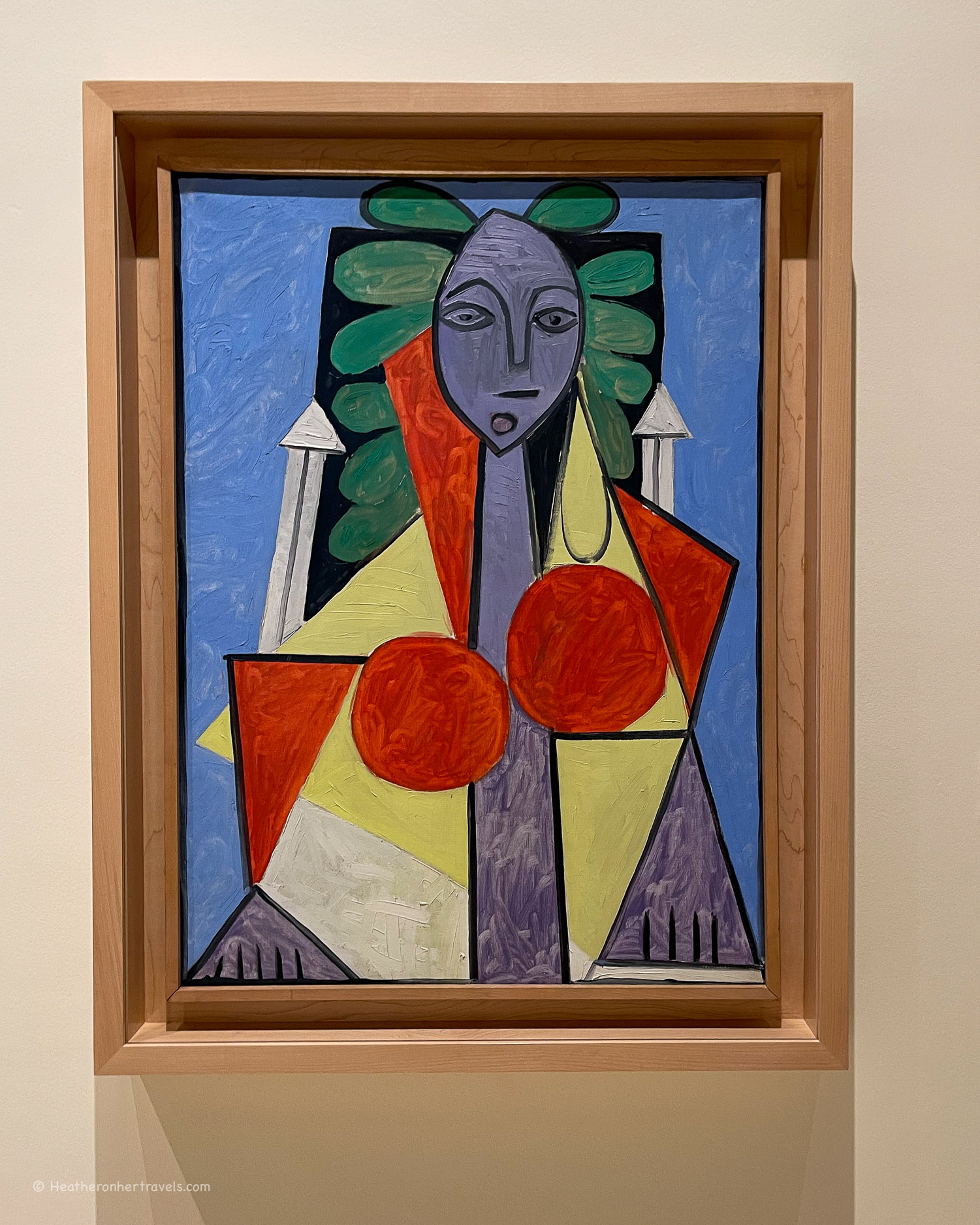
More Art Galleries in Malaga
Carmen Thyssen Museum
A beautiful art museum set in a 16th century palace, with art from the old masters to impressionists and early 20th century Spanish artists. The museum shop is a good place for gifts. Check the website for more information.
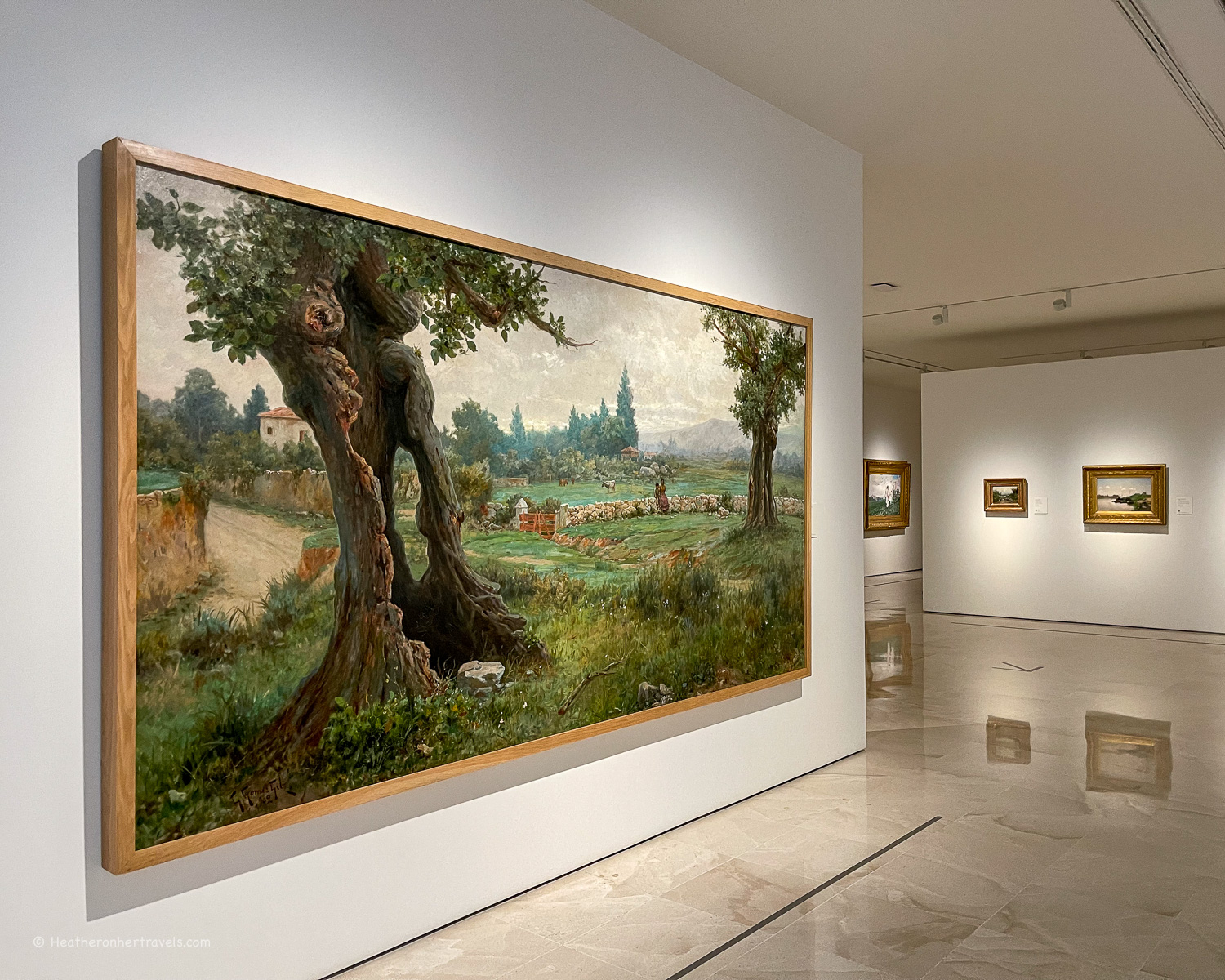
Pompidou Centre
This outpost of the Pompidou Centre in Paris is topped by a colourful transparent cube El Cubo, in the port area by Muelle Uno. It houses a collection of modern and contemporary artworks, with permanent collections and changing exhibitions. Check the website for more information.
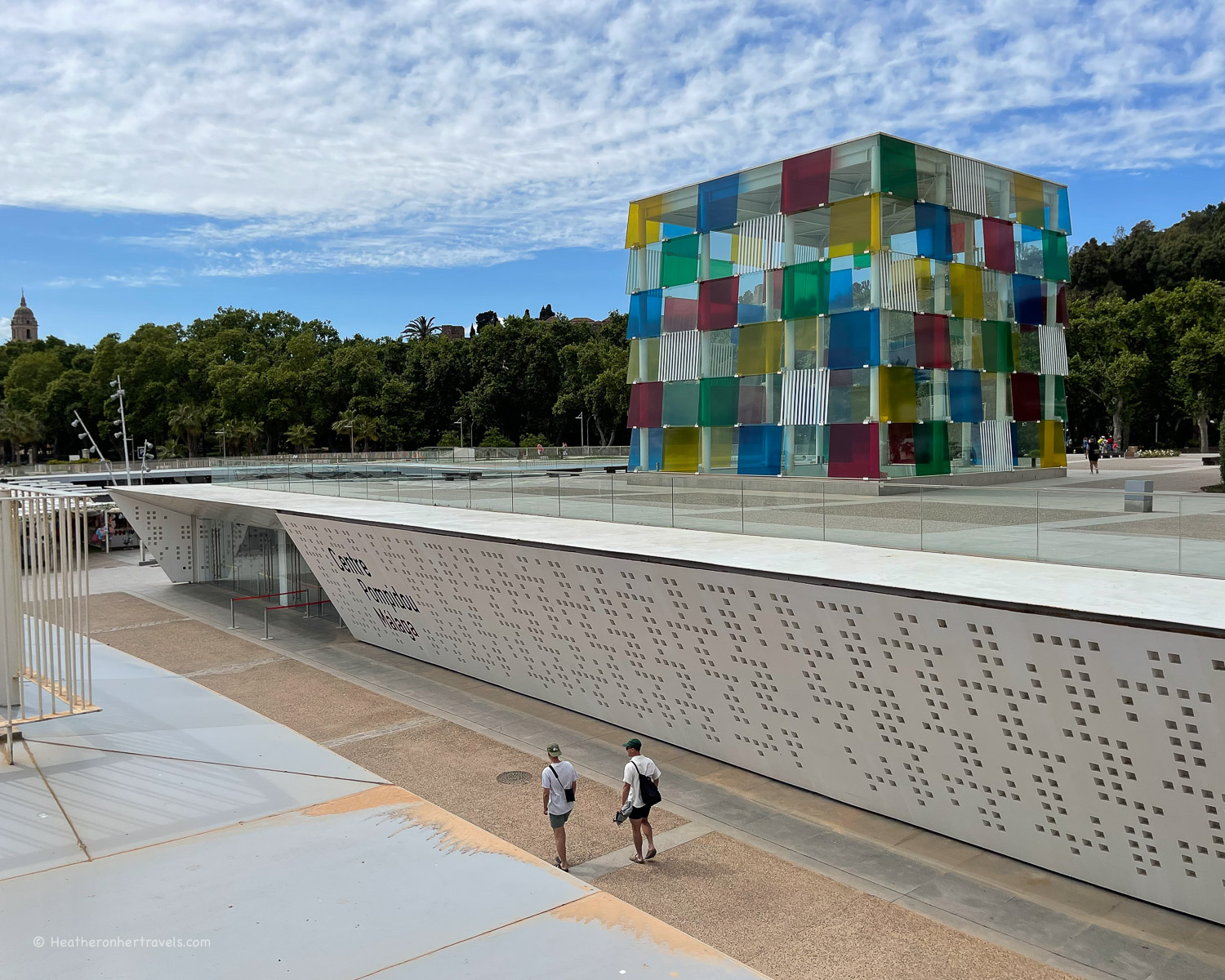
CAC Malaga
The Centro de Arte Contemporáneo de Málaga (CAC Malaga) is an art museum located close to the river and port, housing a collection of Spanish and international contemporary artists. CAC Malaga is currently closed for renovation, planned to reopen in 2026.
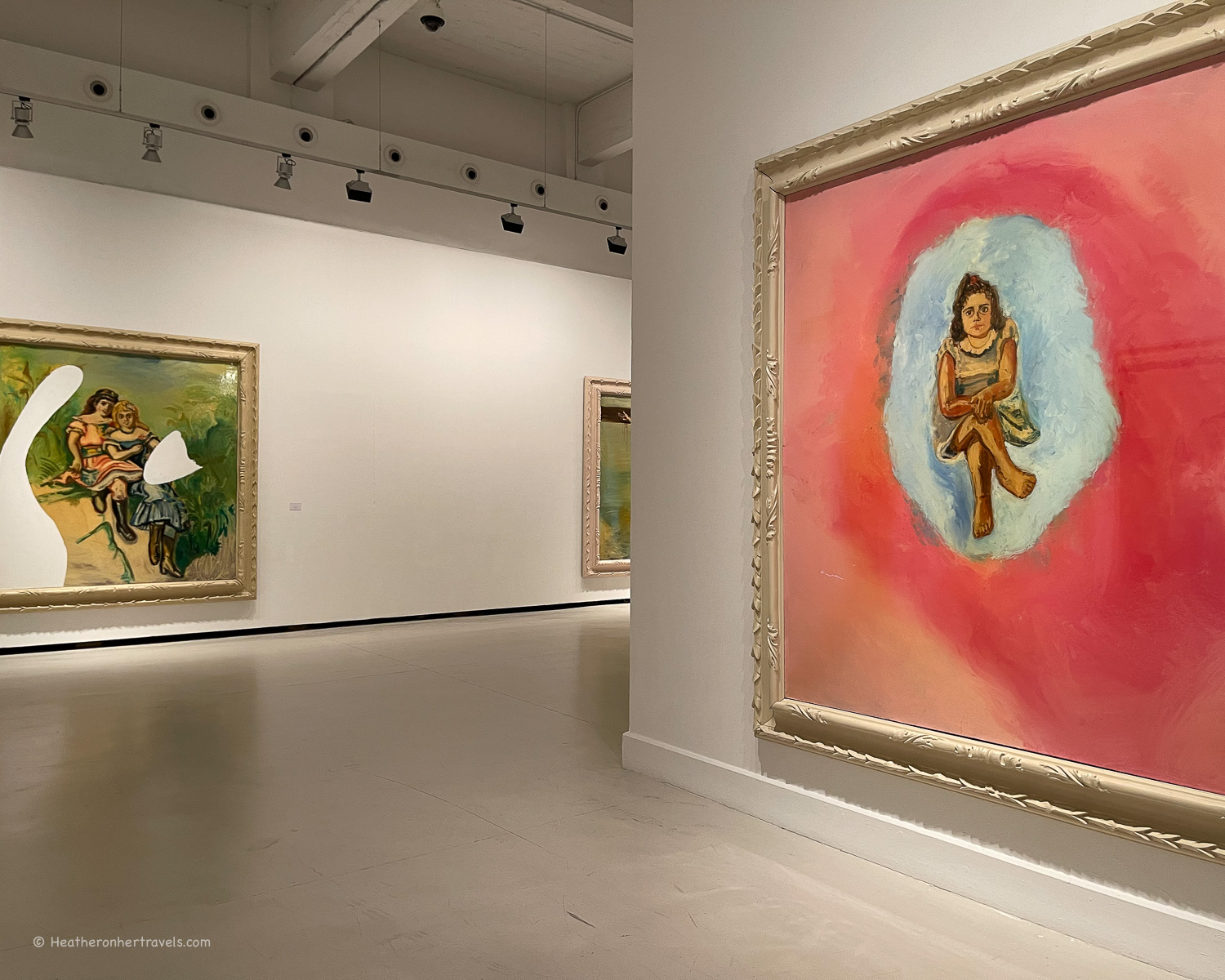
Our favourite museums in Malaga
Malaga Museum
Malaga museum is set in the 18th century Palacio de la Aduana that was formerly Malaga’s Customs House. The port once extended in front of the building, but now, with the reclamation of land where Parque de Malaga stands, it is set some way back from the sea.
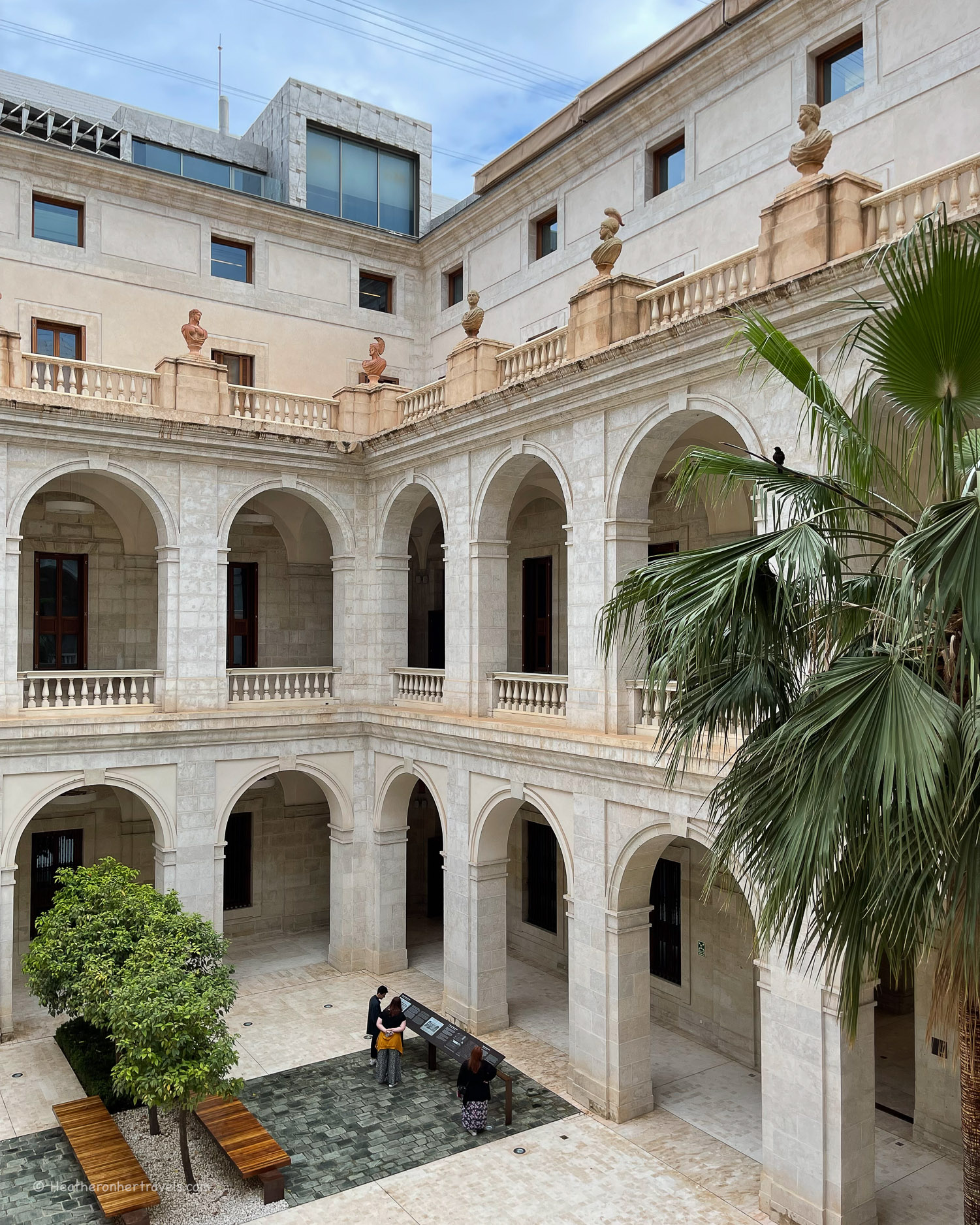
This art and history museum offers insights in Malaga’s past, with artworks by notable Spanish and Malaga artists, as well as archaeological collections from the region.
More information on the Museuo de Malaga website.
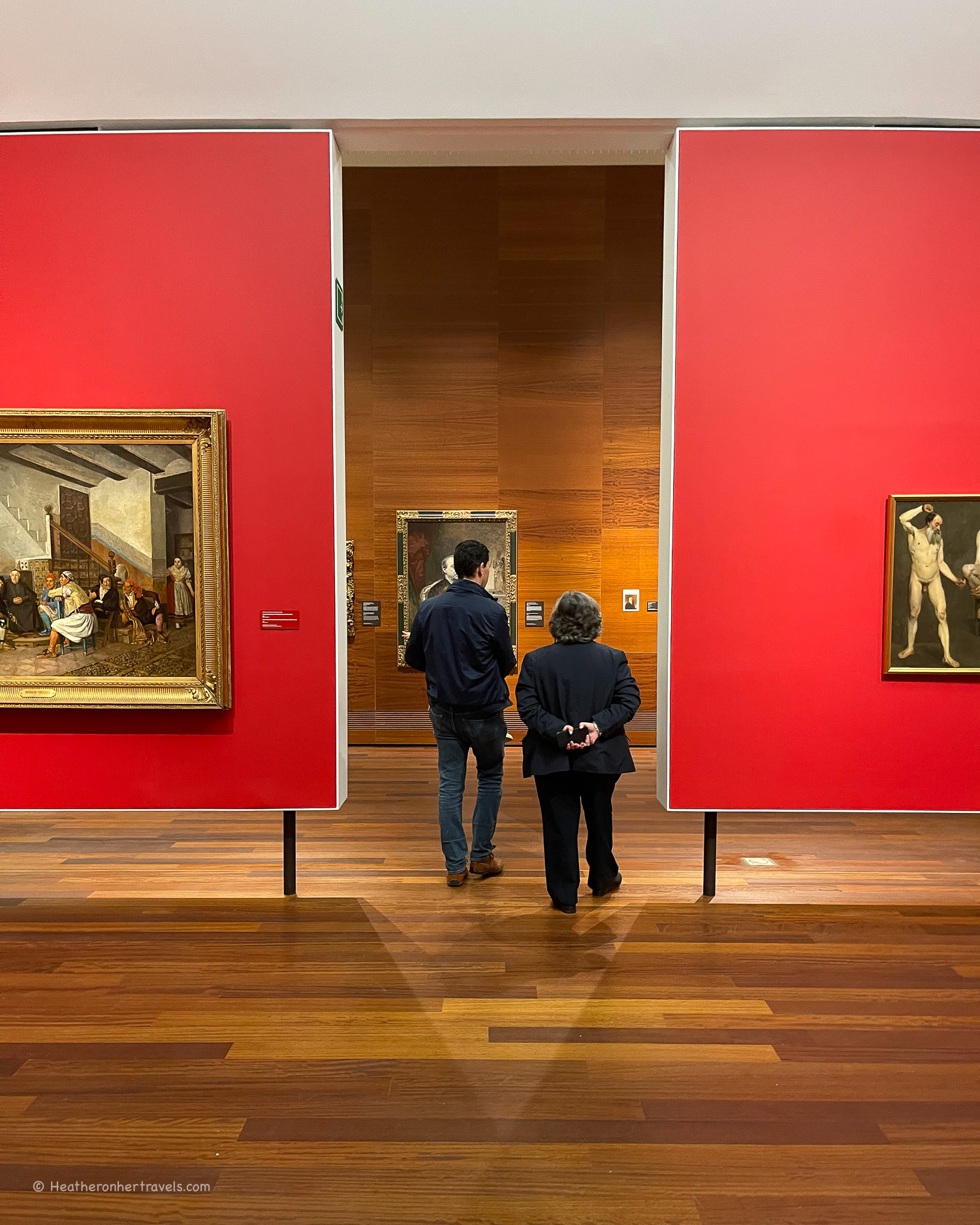
Malaga Glass and Crystal Museum
The charming 17th century mansions houses a collection of glass and ceramics from across the centuries. The museum is located on the northern edge of the historic centre. All visits are part of a guided tour, normally taking place on the hour, but there’s no need to book in advance.
More information on the museum website.
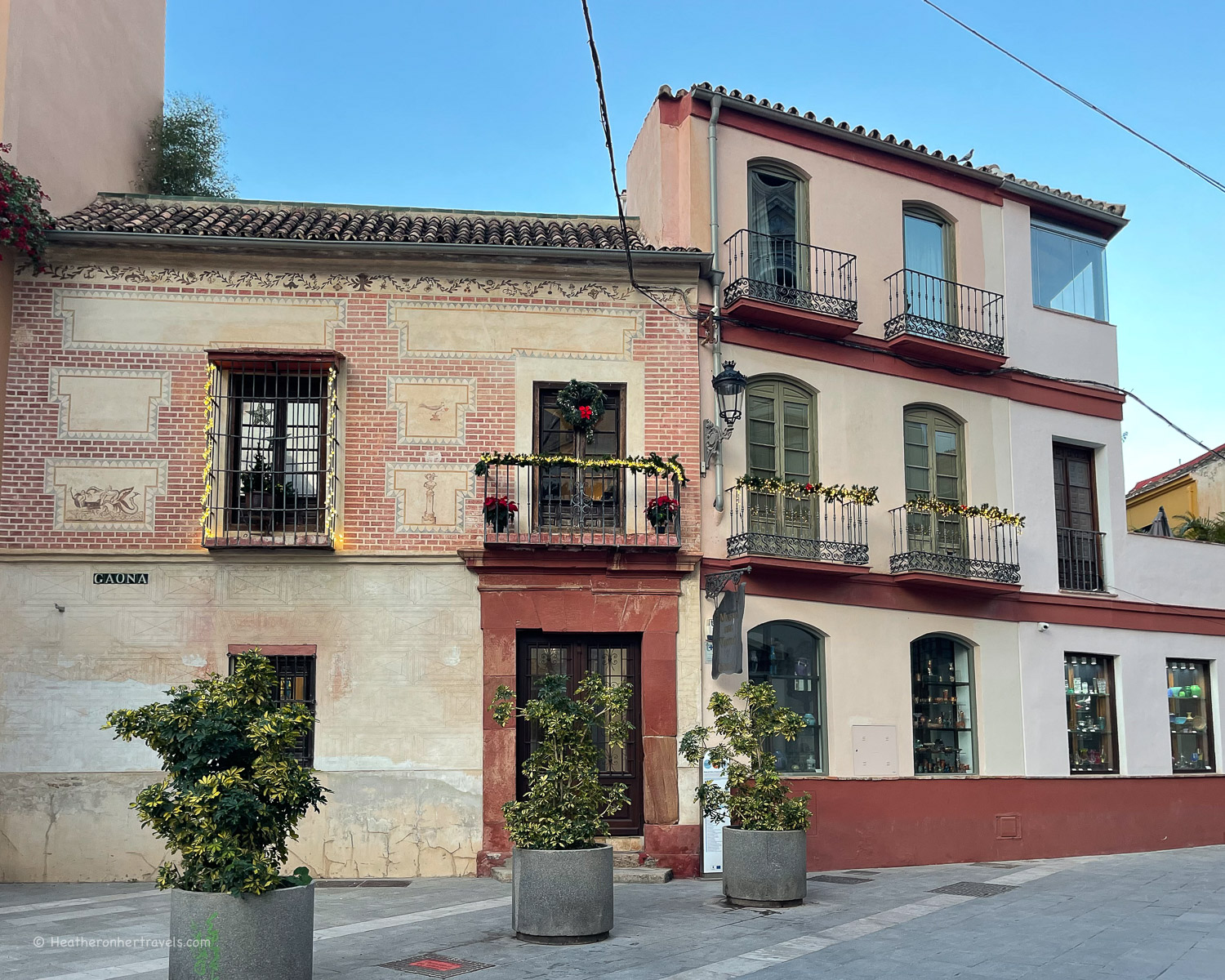
Automobile and fashion museum
The museum is in an old tobacco factory, La Tabacalera, and houses nearly 100 classic cars that were part of a private collection. Each car is paired with couture fashions from leading international designers since the 1920s, showing how trends in fashion and car design went hand in hand.

This was one of our favourite museums in Malaga, since I love fashion and Guy loves cars, the perfect couple’s experience! The museum is a little way south of the historic centre, but can be easily reached in a short bus ride.
More information on the museum website.
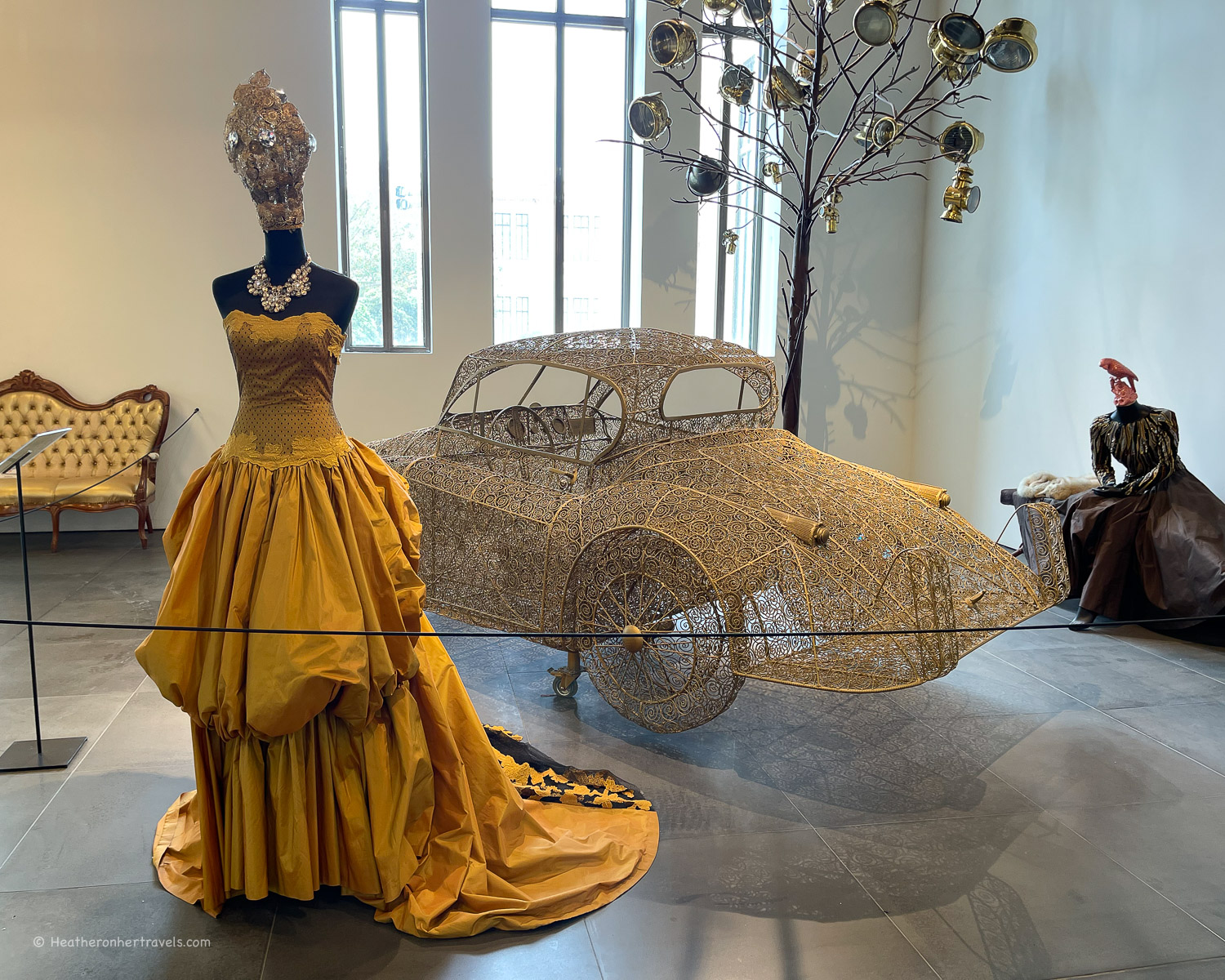
Eating out and restaurants in Malaga
Malaga enjoys a sunny climate all year round, and even in winter it’s often mild enough to sit outside on a sheltered restaurant terrace. Eating out is also affordable relative to other parts of Europe, so it’s common to see extended families or groups of friends eating out together.
If you’re in a large group or at weekends, you may need to reserve a table in advance. Otherwise, if a restaurant appears busy you could just wait or have a drink at the bar until a table becomes available.
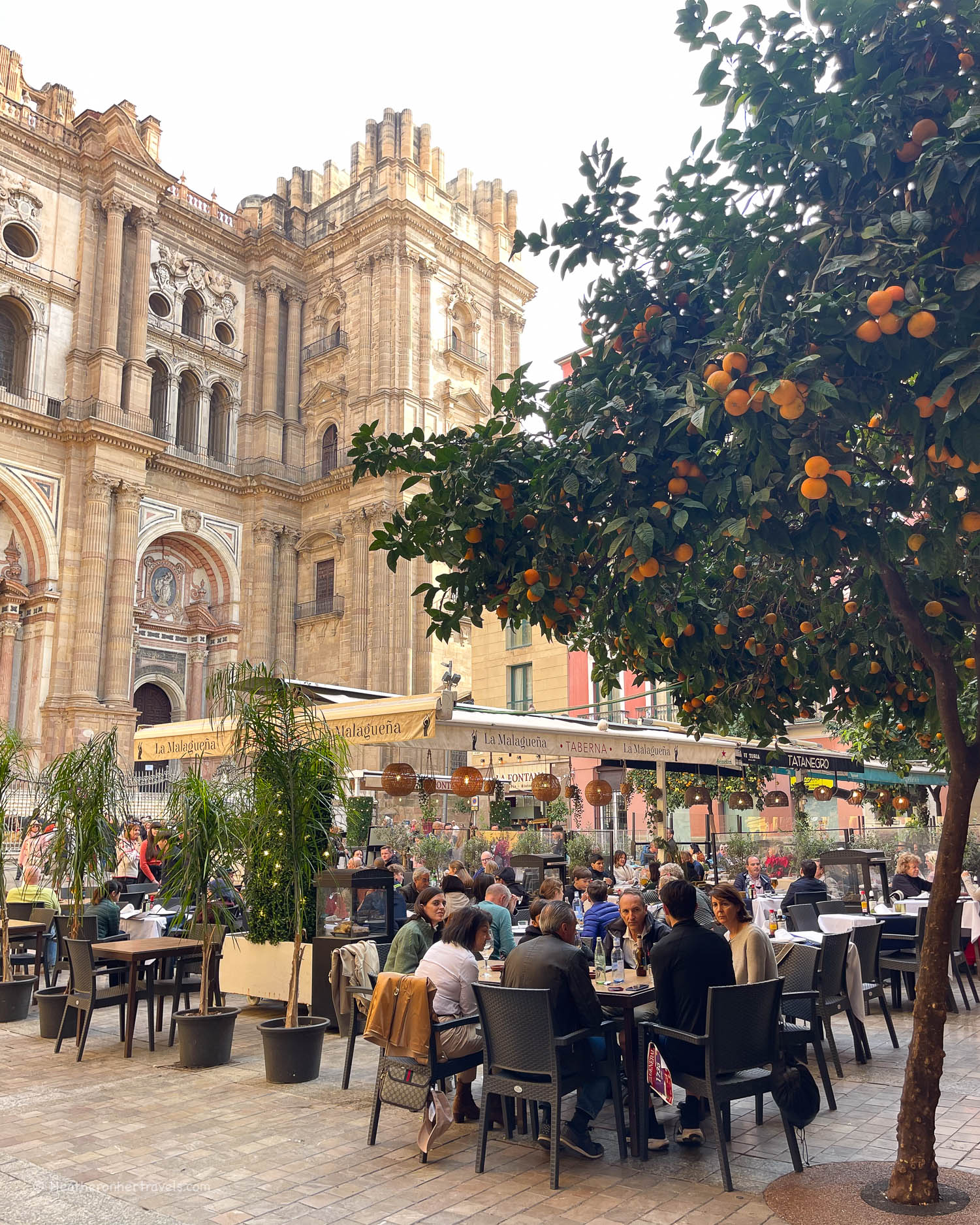
There are endless bars and restaurants in Malaga, so I’d recommend walking around the pedestrianised streets of the old town, to see what takes your fancy. The most touristy areas are around the Cathedral and Plaza de la Constitucion, so if you want a more local experience, you may need to look for restaurants that are a few blocks away from these.
While I hesitate to make recommendations, because there are so many good restaurants, here are a few where we ate or were recommended by our friends who are Malaga locals.
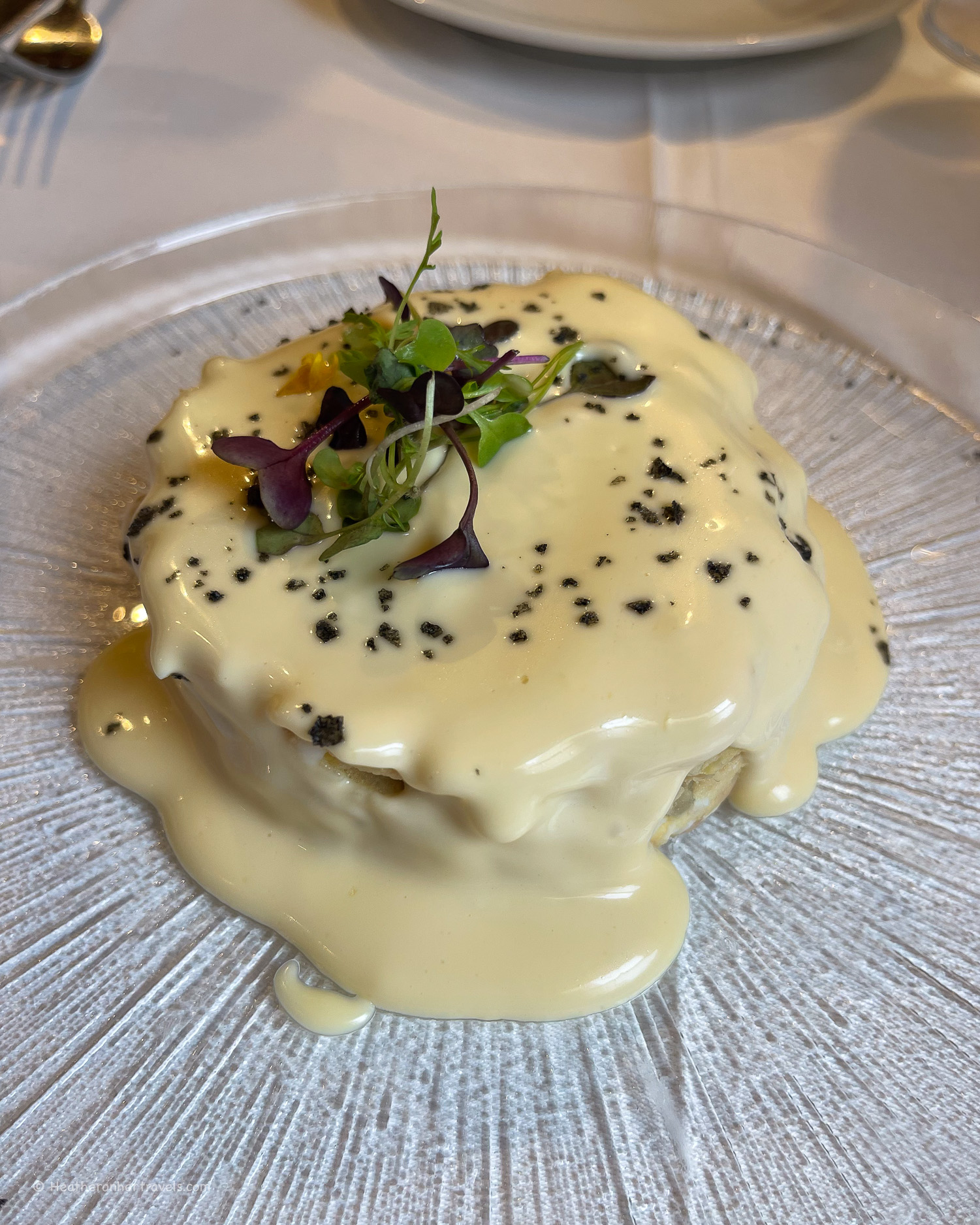
Recommended restaurants in Malaga
El Cenachero Centro (Calle Compania 16) – busy and atmospheric seafood restaurant on three floors close to the Carmen Thyssen Museum.
Carmen Thyssen Museum Cafe (Calle Compania 10) – if you are looking for a quiet spot for lunch, this museum cafe serves a good value Menu del Dia at lunchtime.
O Mamma Mia (Plaza de las Flores 7) – a family run Italian pizza & pasta restaurant in a central but quiet square with outdoor terrace, a good bet if you need somewhere that’s family friendly.
L’Experience (Plaza Obispo 4 ) – While you are in prime tourist territory, there’s something magical about this tapas restaurant’s terrace overlooking the cathedral. There are plenty more nice looking restaurants in the streets around the Cathedral.
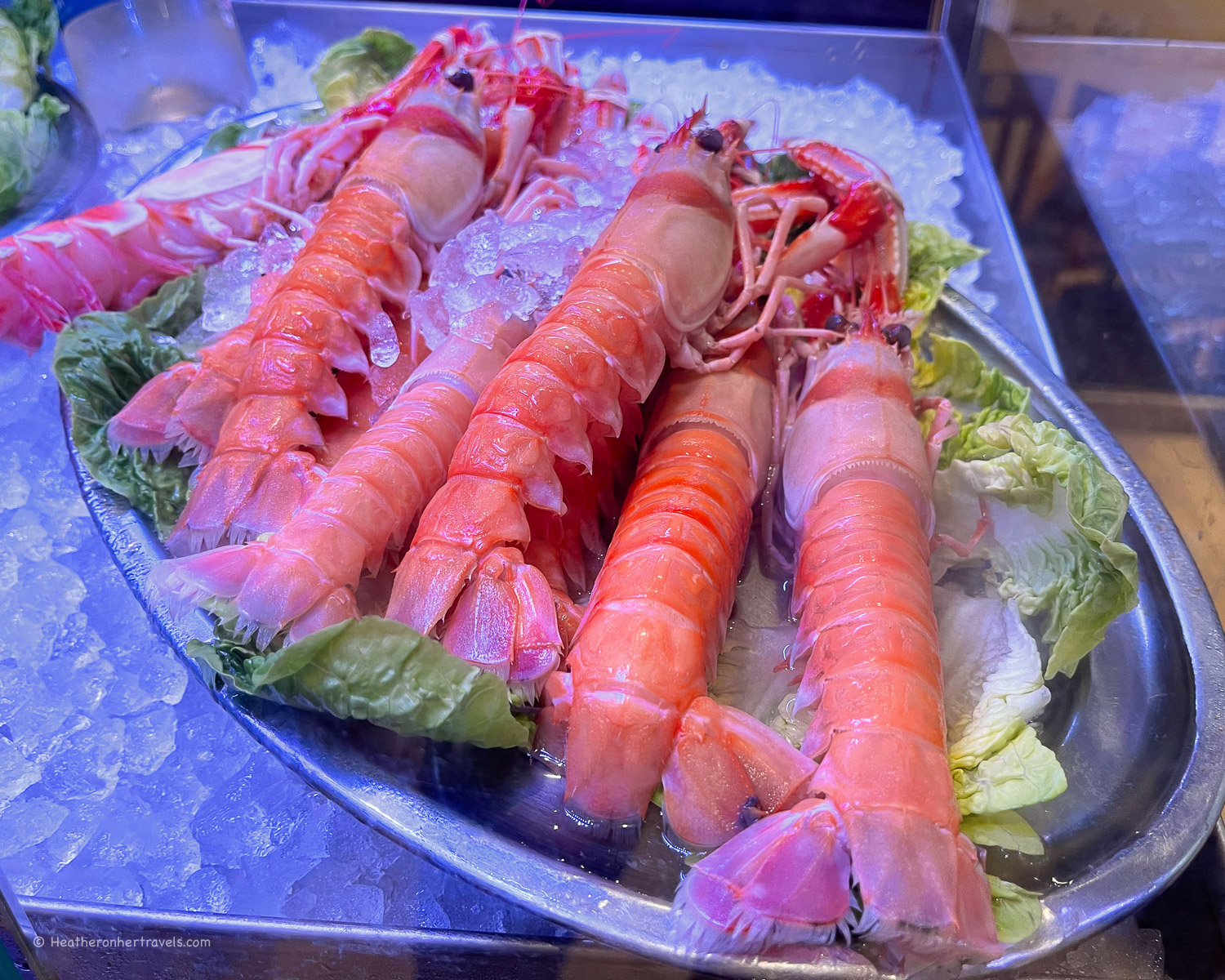
If like me you are picky about your barista style coffee, head to Next Level Coffee (Calle San Juan 27) or Syra Coffee – takeaway only (Calle Martires 13).
Casa Mira (Calle Cister 8) – This Malaga institution serving ice cream, sweets and turon has several locations, but the one near the cathedral is especially nice and has a few tables outside for coffee or ice cream.
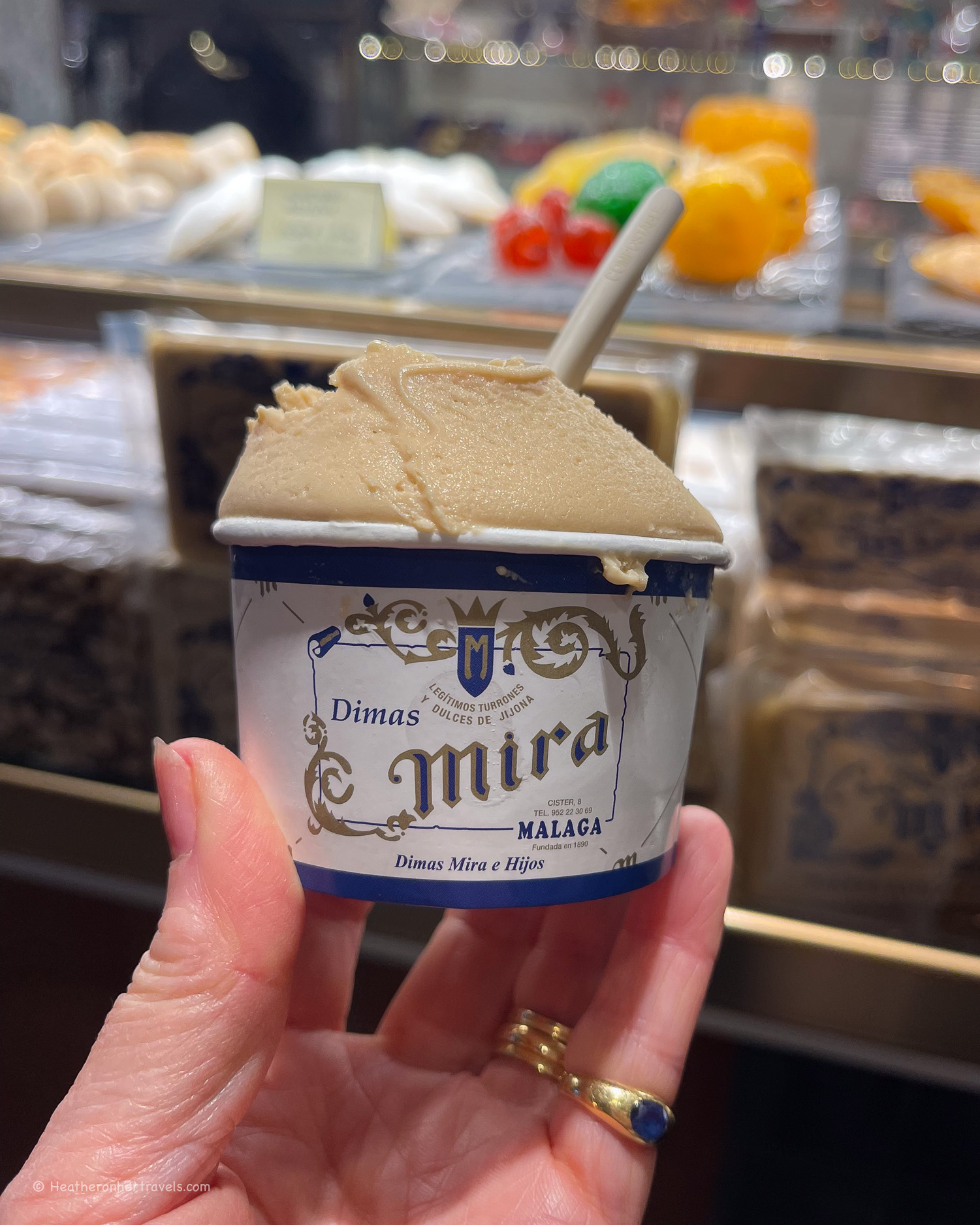
For foodie souvenirs or picnic supplies, head to Atarazanas Market in the centre of Malaga or the food hall on the Lower Ground floor of El Corte Ingles.
There are numerous Chiringuito or beach restaurants serving seafood on Malagueta beach. We enjoyed lunch at Chiringuito Tropicana but there are several others, so take your pick of what looks busy and open.

More things to do in Malaga
We’ve covered some of the top things to see in Malaga, including our favourite museums and art galleries. Here are a few more unusual things to do in Malaga, that are worth considering if you have more time.
Hammam Arab Baths
The Hammam Arab Baths is a great place for couples, a girl’s getaway, or on days when the weather isn’t being kind. Enjoy the modern Spa experience in a traditional Arab style Hammam, with hot and cold baths, steam rooms, massage and treatments. It’s tucked away in the historic centre, close to the Carmen Thyssen museum.
Book a 90 minute Hammam session with optional massage here.
La Concepcion Botanical Garden in Malaga
The beautiful La Concepcion botanical garden in Malaga covers 3.5 hectares of palms, water features and glasshouses, spread over the hillside overlooking Malaga. It’s particularly popular to visit around Christmas time, when there’s a festive light trail, Las Luces de la Concepcion.
The Botanical Garden is located a little outside the centre of Malaga, but there are good public transport options and shuttle buses to get there.
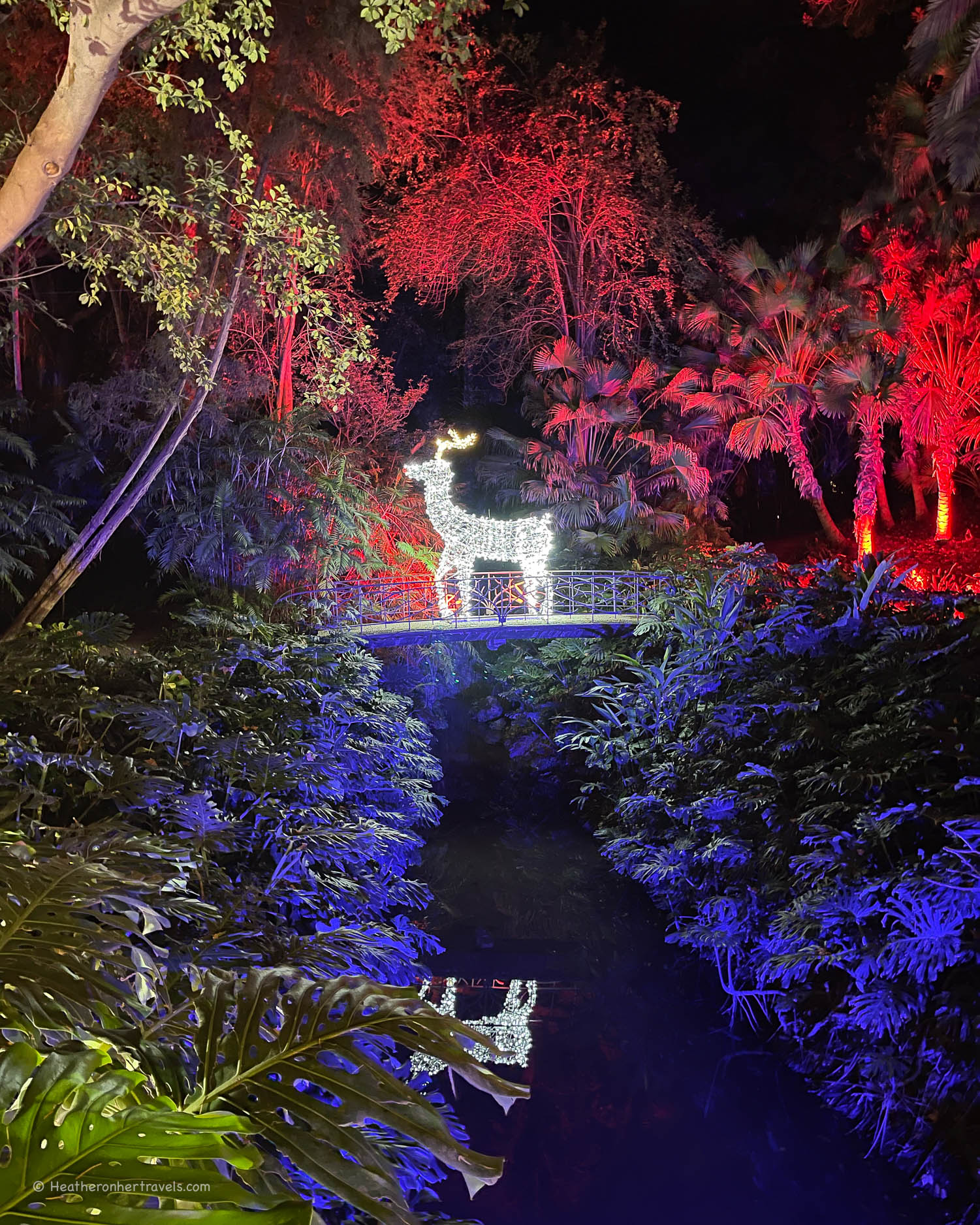
Visit at Christmas lights
Christmas in Malaga is a special time to visit, when the city is buzzing with festive atmosphere. The pedestrianised streets of the historic centre are strung with sparkling Christmas lights and there are nightly free light shows, on Calle Larios and the Cathedral square.
The generally mild and sunny weather, wide range of shopping, fantastic restaurants and Belénes nativity scenes around the city, make this a great alternative to the chillier Christmas Market destinations.
Read my article about all the festive things to do in Malaga at Christmas.
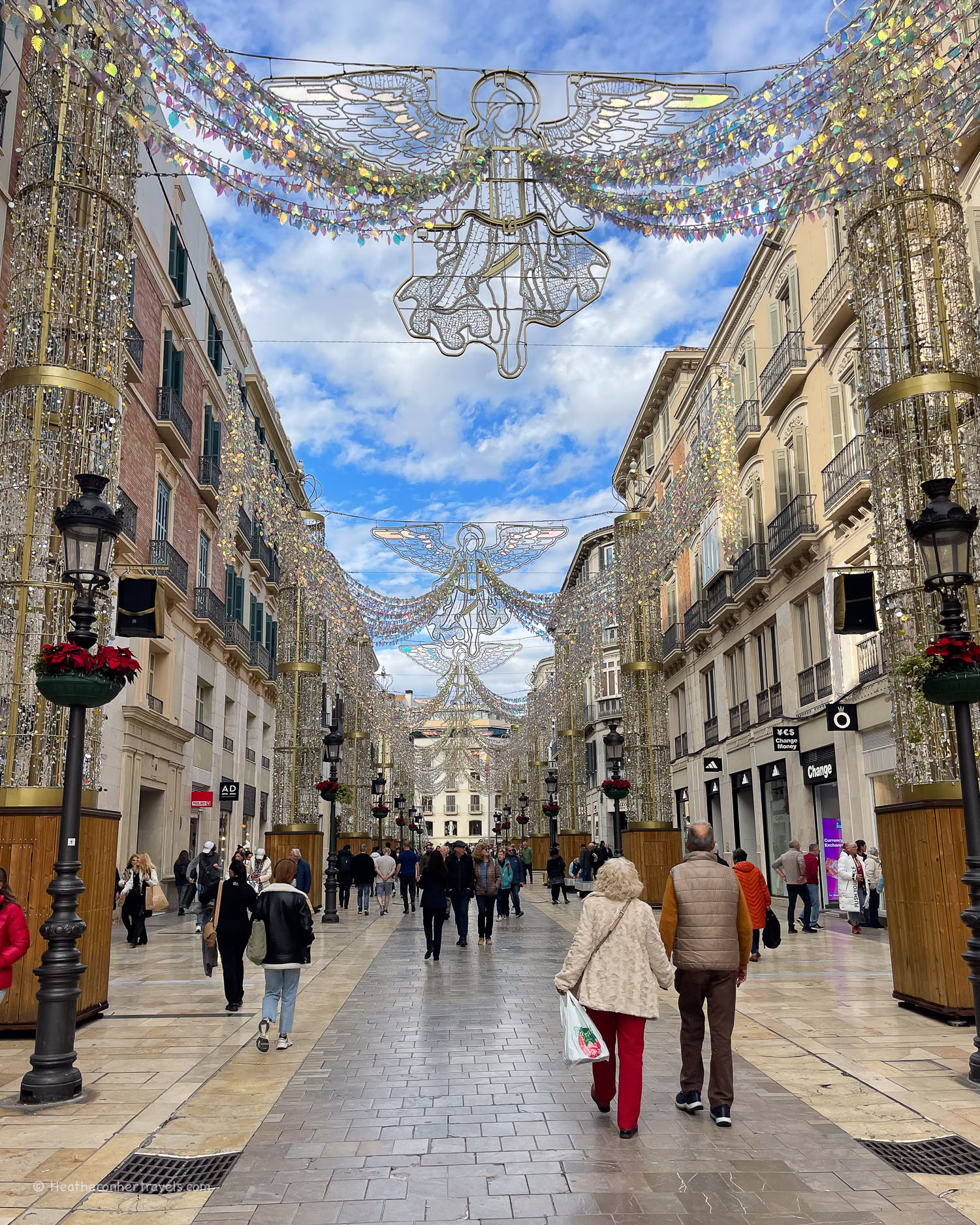
Where to stay in Malaga
If visiting Malaga for a short break, we recommend you stay in the Historic Centre or Soho neighbourhoods, close to all the main attractions. However there are many bars and restaurants in this area, so be sure to read the reviews to avoid places mentioning street noise.
A good budget option is to stay just across the river in the neighbourhoods of Marmoles, Alameda or Perchel Sur. These are an easy walk to the historic centre, yet well located for the bus and train stations. As these neighbourhoods are more residential there are many options for apartment stays, as well as some more budget hotels.
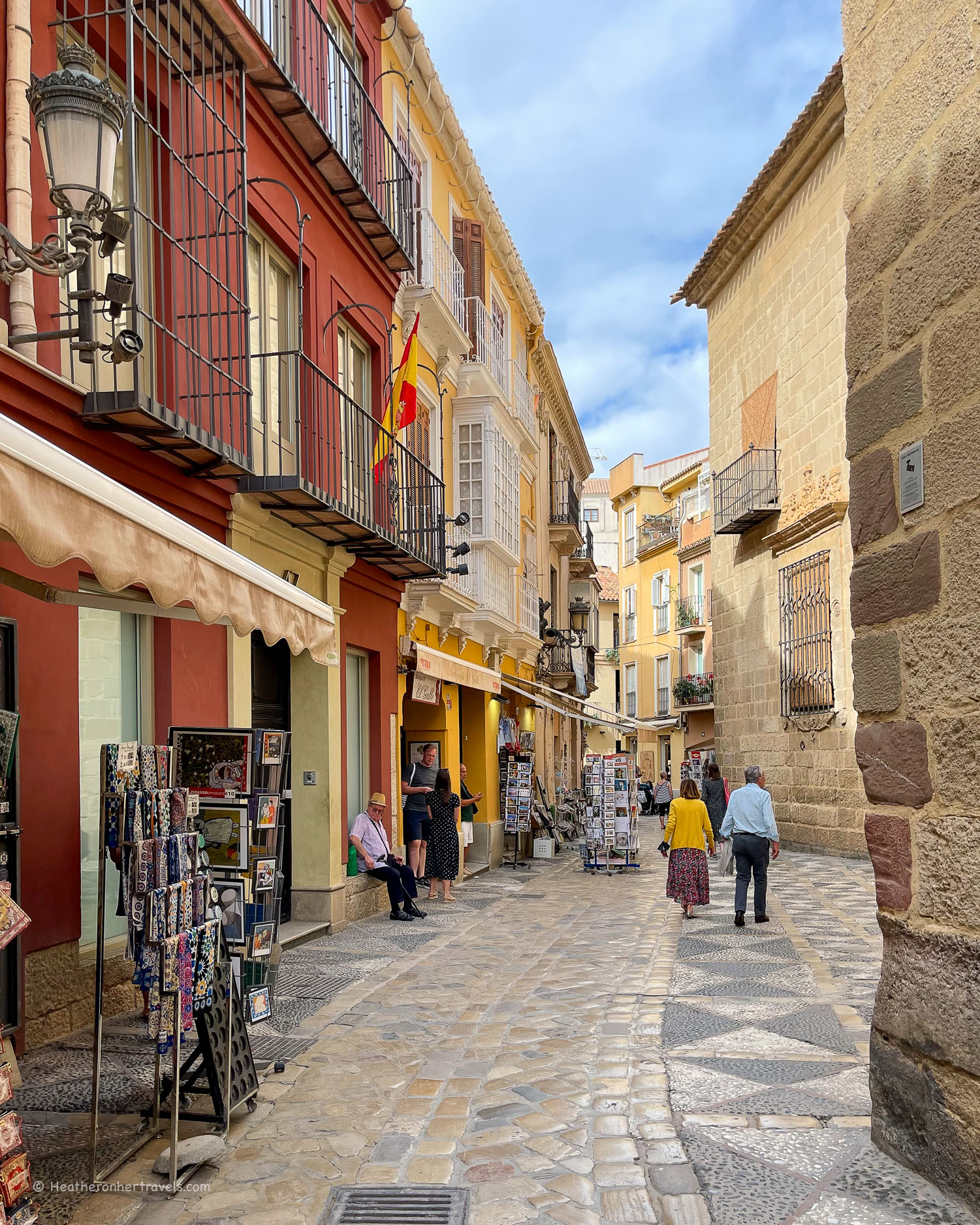
Hotels we recommend
Luxury – Palacio Solecio – a small luxury hotel in the heart of Malaga’s historic centre.
Mid-range – AC Hotel Malaga Palacio by Marriott – a smart modern hotel that’s well located in Malaga’s central area.
Budget – Ibis Malaga Centro Ciudad – a modern budget hotel on the edge of the historic area.
2 bedroom apartment – You Trip Malaga – this 2 bedroom apartment owned by our friend (where we stayed) is clean and modern, just a 10 minute walk from the historic centre.

Stay at the Palacio Solecio – a small luxury hotel in the heart of Malaga’s historic centre

The AC Hotel Malaga Palacio by Marriott is a smart modern hotel that’s well located in Malaga’s central area
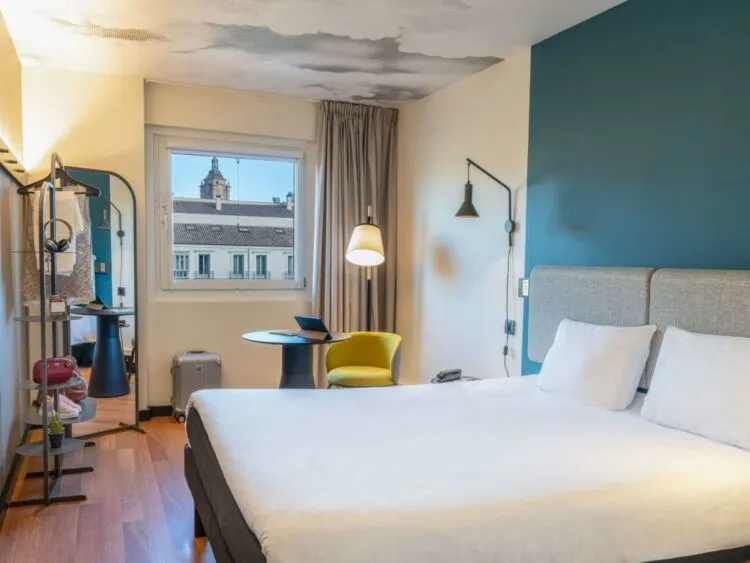
Stay at the Ibis Malaga Centro Ciudad, a modern budget hotel on the edge of the historic area

YouTripMalaga is a clean, modern 2 bedroom apartment 10 minutes from the historic center
Getting to Malaga
By plane
Most international visitors to Malaga arrive at Malaga-Costa del Sol Airport, located 13km to the south-west of the city (25 mins by road).
From here, we recommend using the rail link (Line C1) from the airport to Maria Zambrano station, which takes around 15 mins. Alternatively, take the public bus Express Line 3 from outside Terminal 3, which takes around 25-45 mins depending on traffic, but may be more convenient as it has stops closer to the historic centre and port.
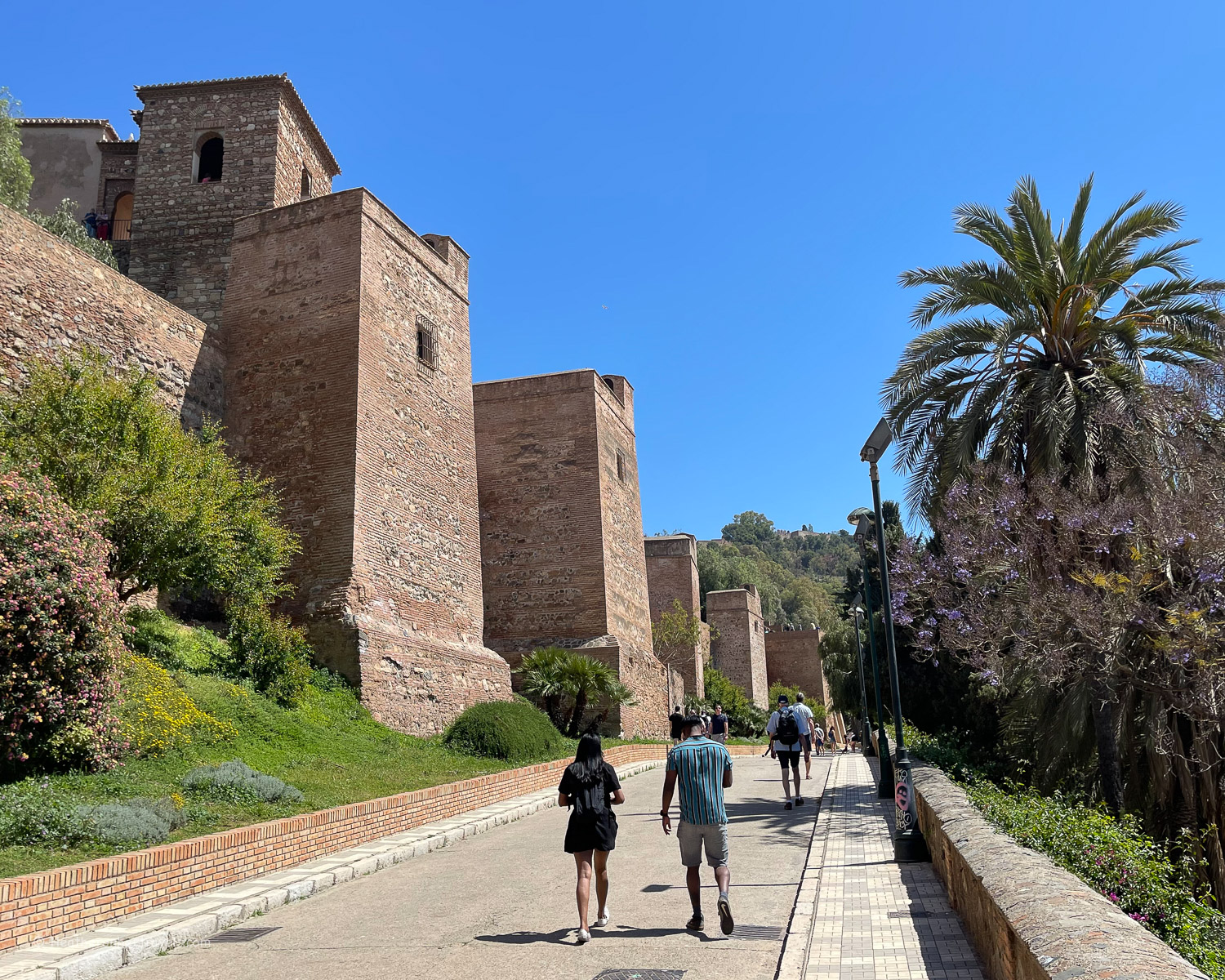
By Train
If you have been travelling in Spain, there are good rail connections to Malaga from Madrid and other Spanish cities in the south, such as Seville, Grenada and Cordoba. Trains arrive to Malaga Maria Zambrano station, which is just outside the historic centre.
We normally use Trainline to work out train times and prices in Europe and you can use their app to book your tickets online.
If you want to visit Malaga as part of a wider trip by train around Europe, we recommend Byway Travel, who specialise in arranging no-fly holidays.
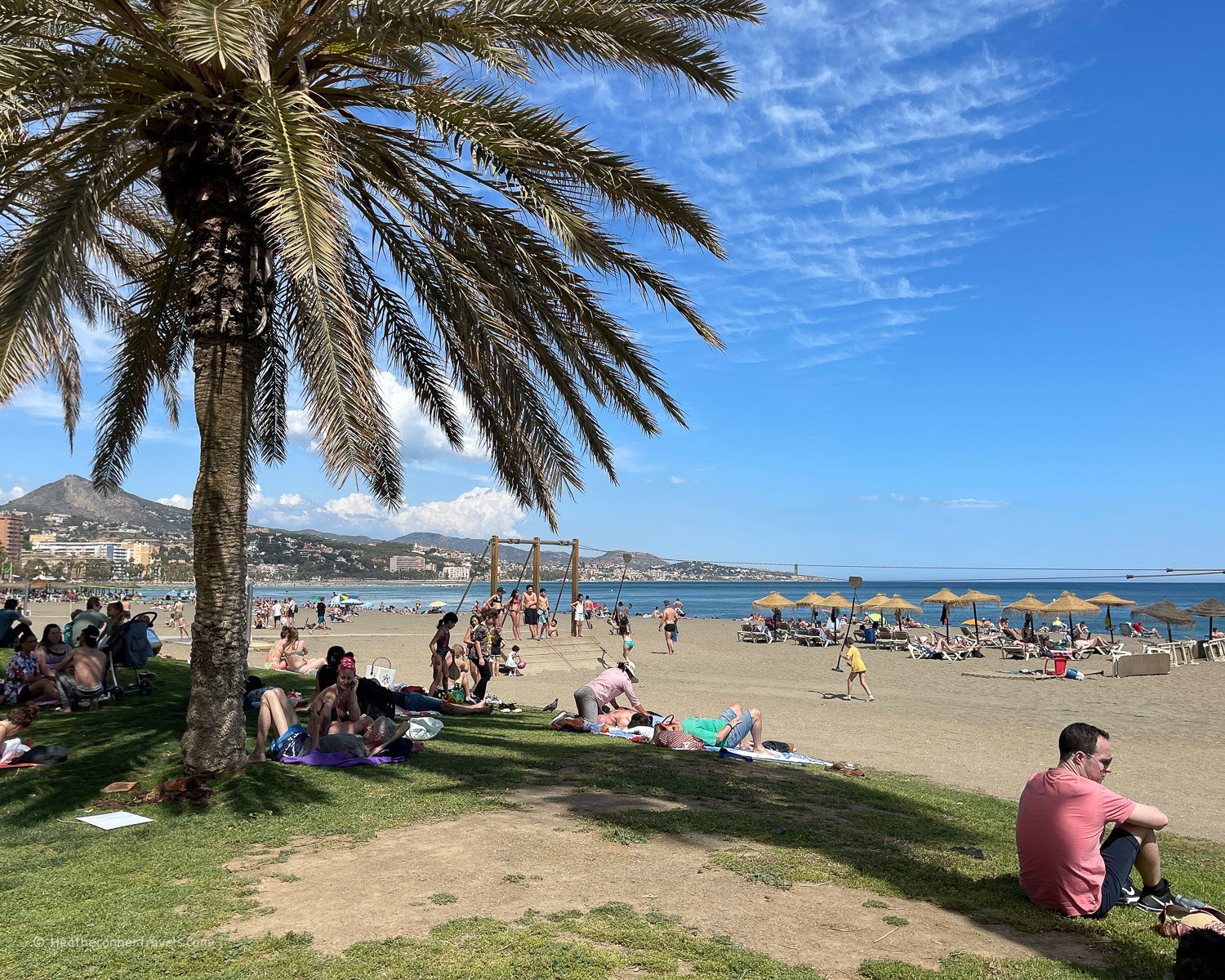
By Bus
There’s a good network of inter-city buses in Spain, so if travelling around the country, you may find it convenient to arrive in Malaga by bus. There are many different bus companies, so we recommend checking the Malaga Bus Station website, to see which bus companies travel where, or alternatively use your favourite mapping tool to find the bus options.
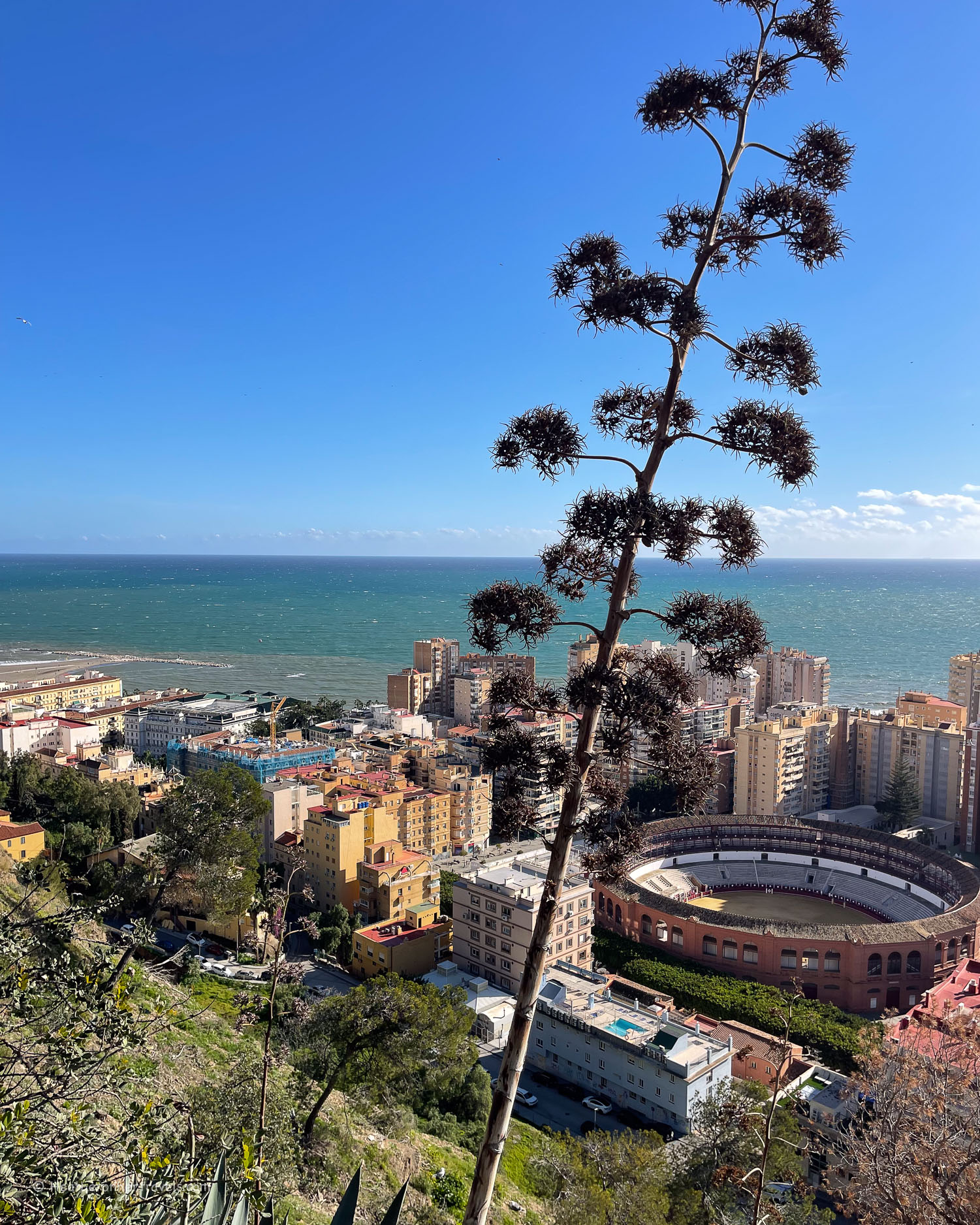
Getting around Malaga
Malaga has an excellent public transport system, and the historic centre is largely pedestrianised, so you don’t need to hire a car for use in the city. For public transport the options are shown below.
While most places in the historic centre are easily walkable, a bus is your best bet for longer journeys. The Metro and Suburban trains are useful for getting from the centre to the city suburbs.
By Metro
There are two lines, L1 and L2, which run from Atarazanas metro station (close to Atarazanas market and the port) and continue towards the west of the city. Both L1 and L2 run through El Perchal metro station, which is the Intercambiador (central station linking bus, metro and suburban trains). Check the metro map here.
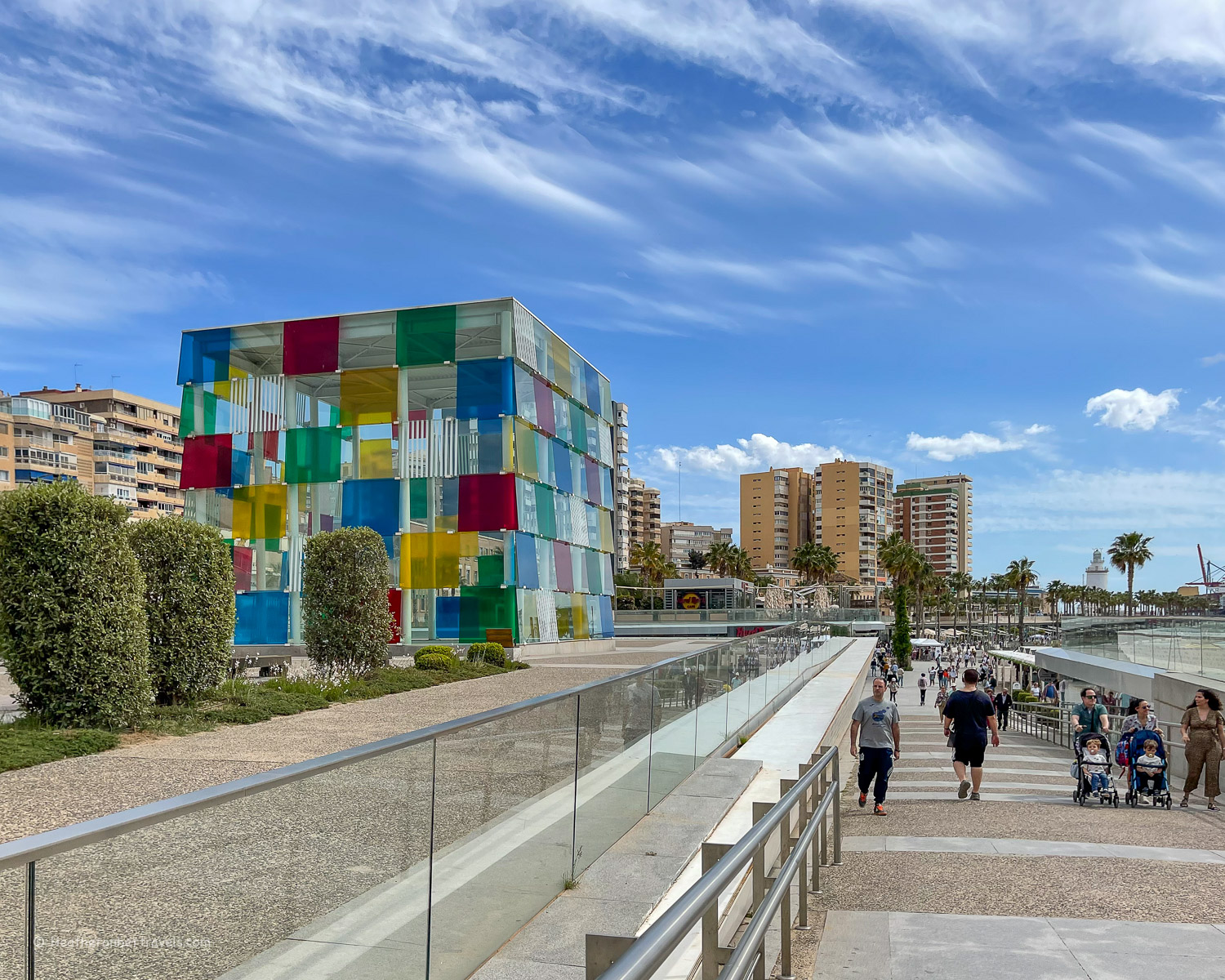
By Suburban train
The state owned train operator RENFE run the Cercanias (commuter) Malaga trains. There are two lines C1 and C2, both is which start at the central train station in Malaga, Maria Zambrano station. C1 runs south-west along the coast, stopping at the airport, and ends in Fuengirola. C2 runs west to Alora. Maria Zambrano station is also the Intercambiador, so you can connect here with metro trains and buses. Check the Cercanias / Suburban train map here.
By Bus
The bus service in Malaga is provided by the Empresa Municipal de Transportes (Municipal Bus Company). You can tap on and off the buses, using a debit card. Check their website for Lines and Schedules.
To find out the best transport options in real time when out sightseeing, I generally use the Citymapper app, which covers Malaga.
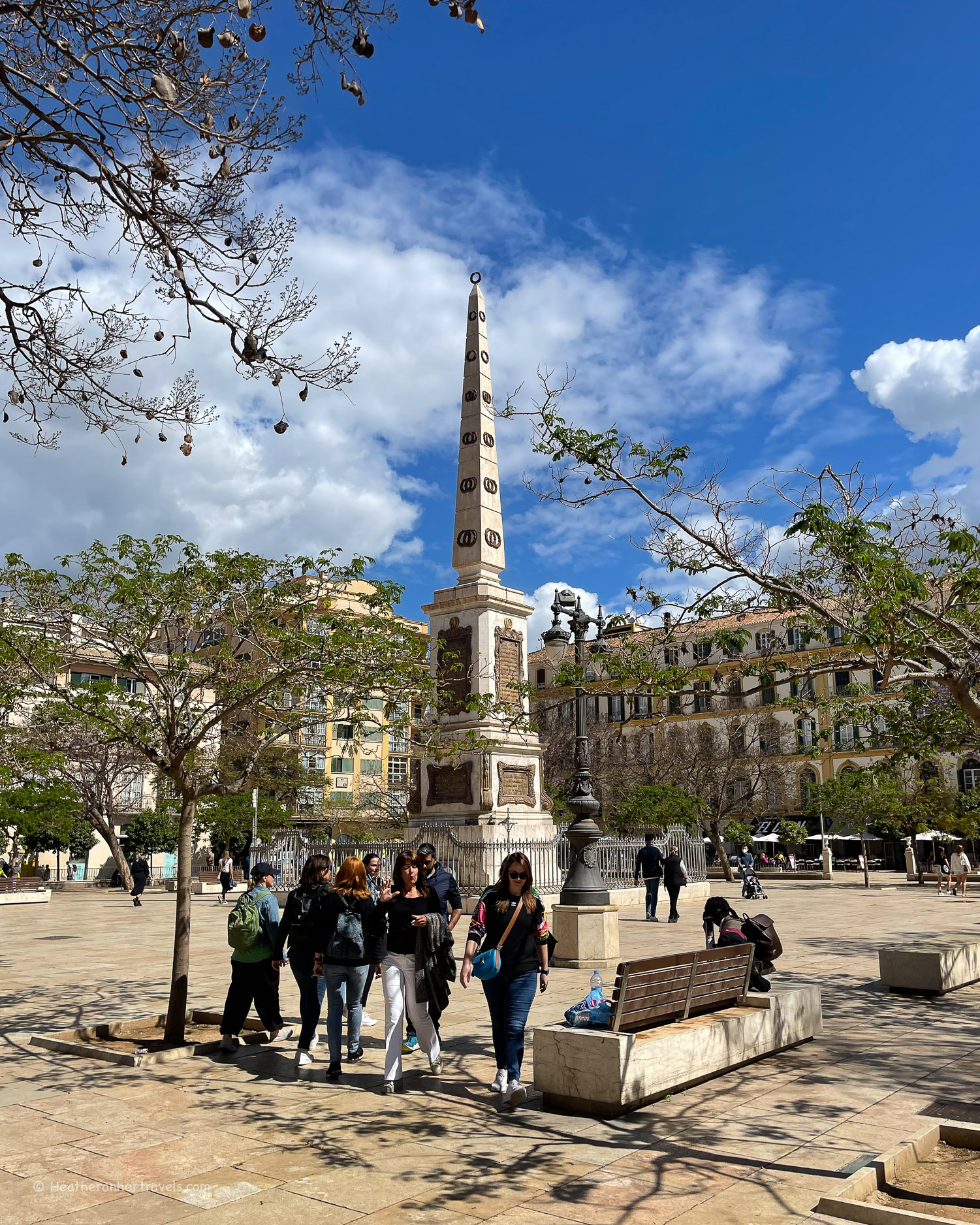
Pin It!
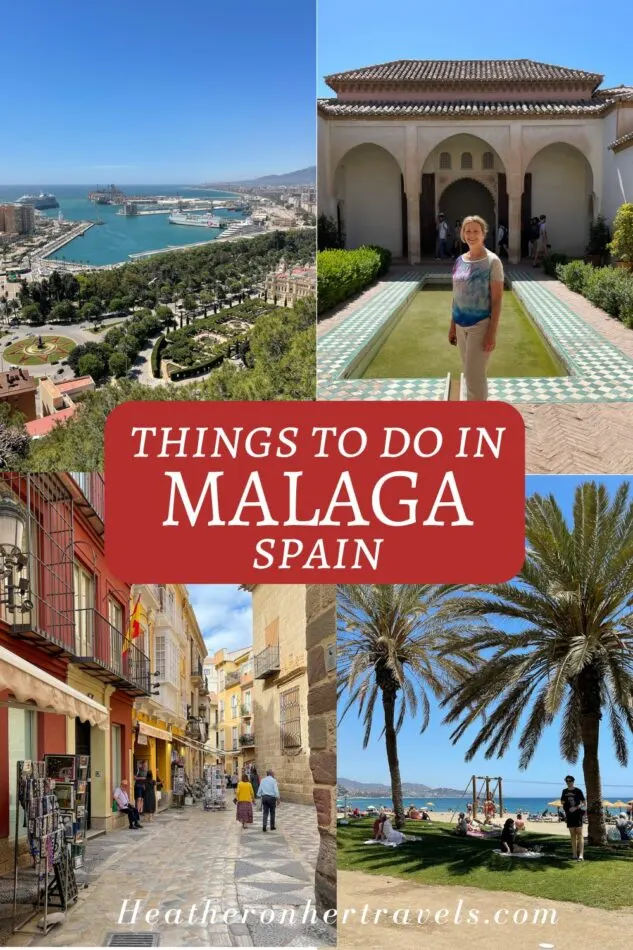
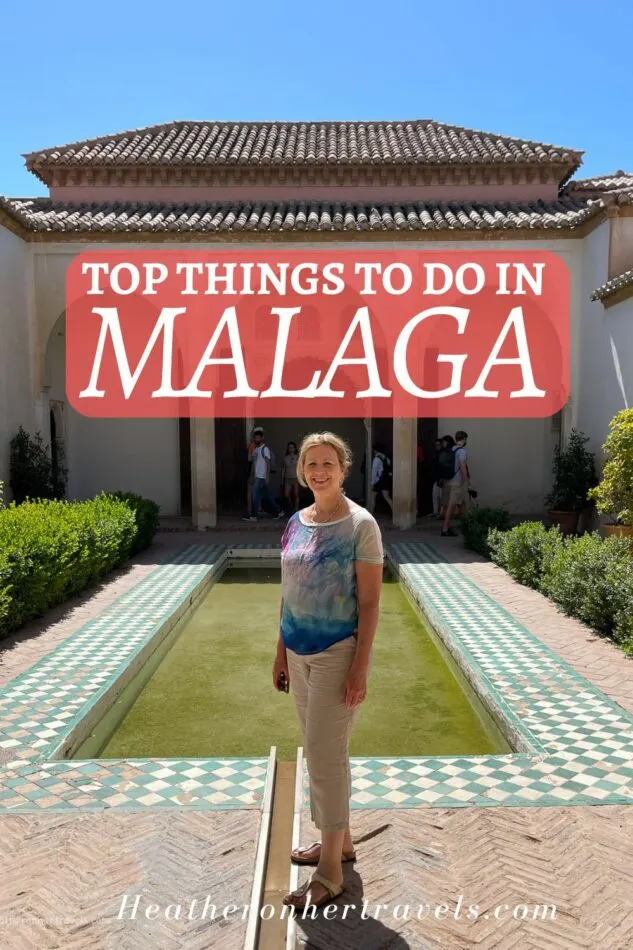
This article is originally published at Heatheronhertravels.com

